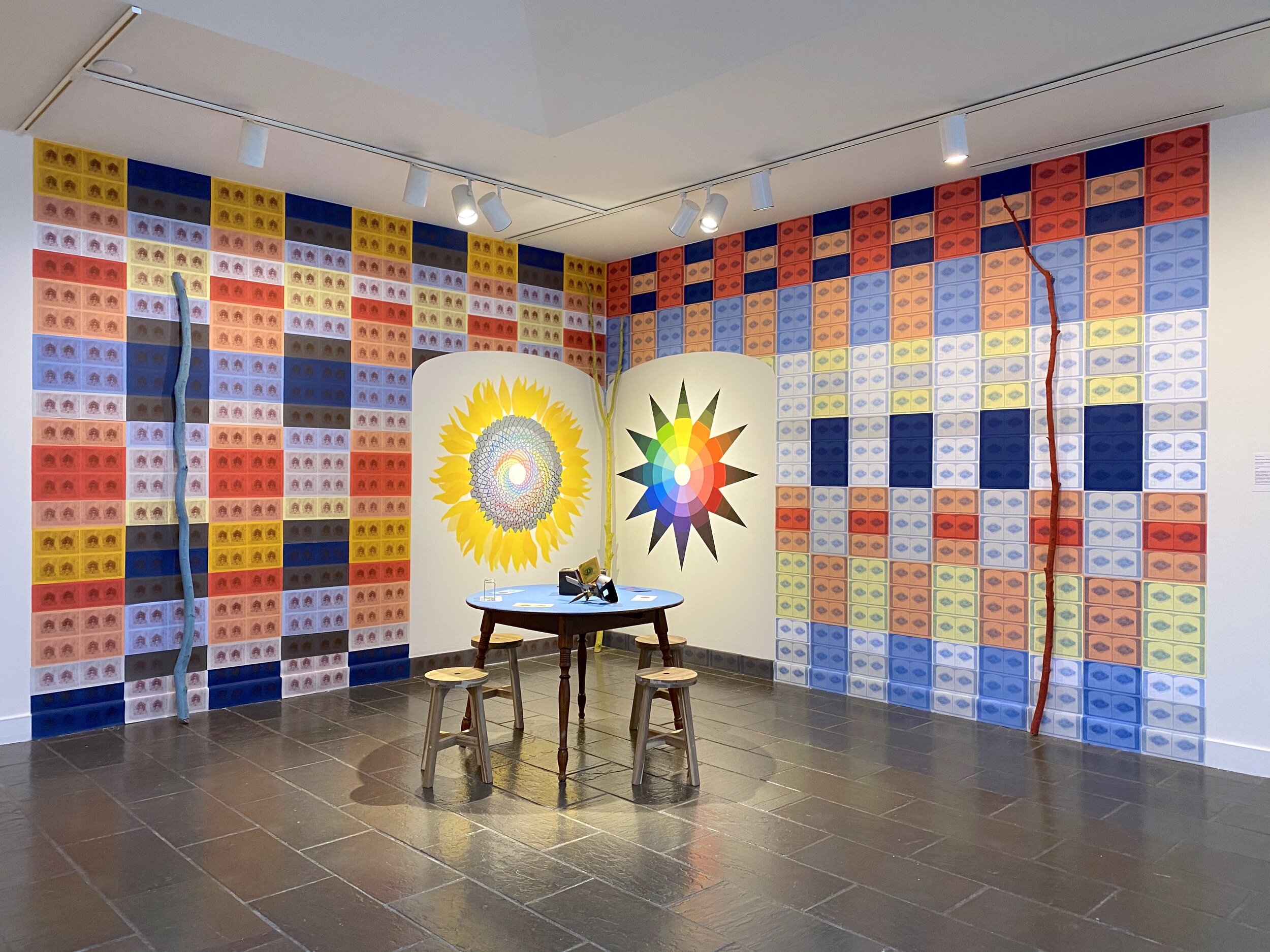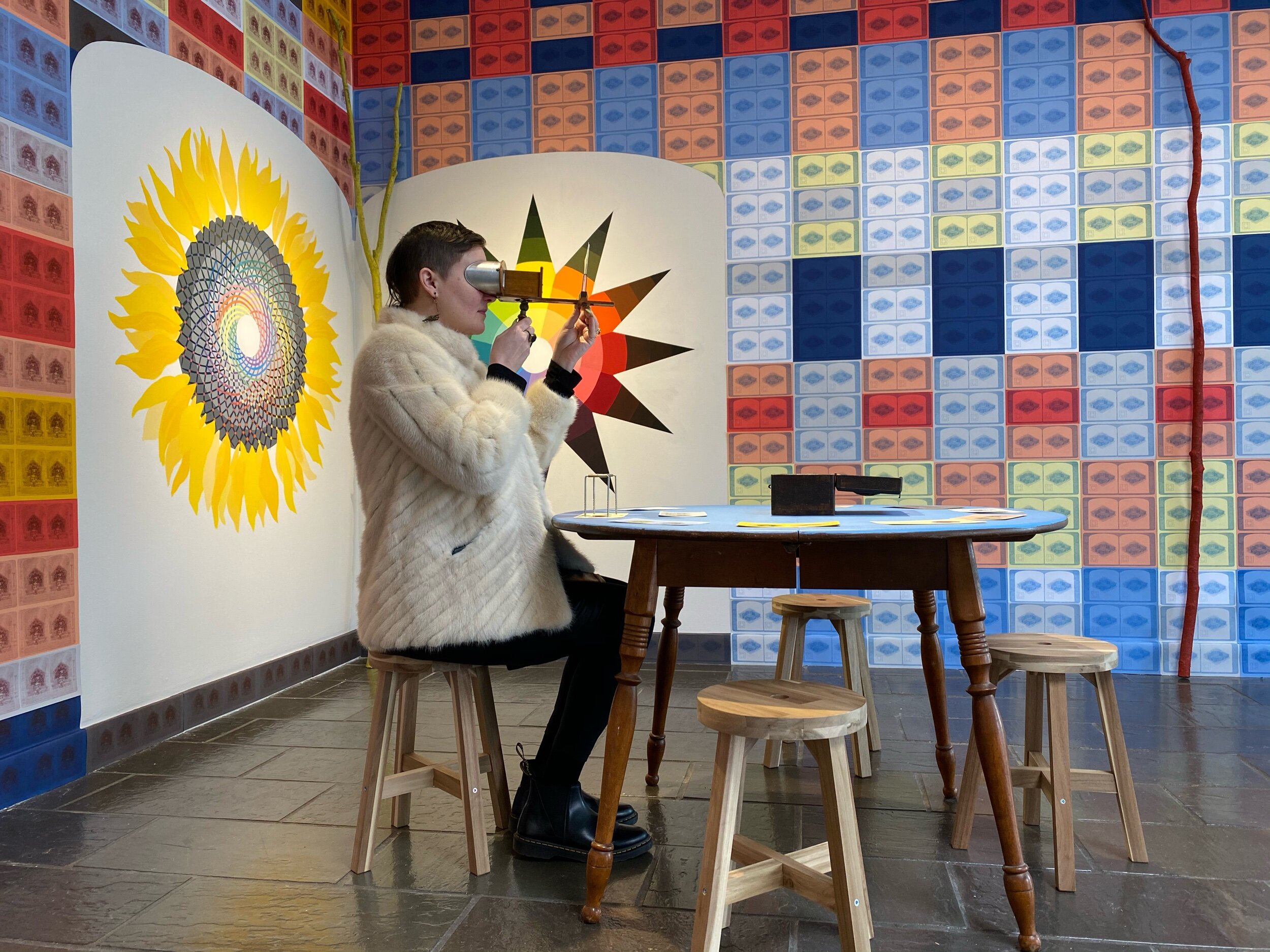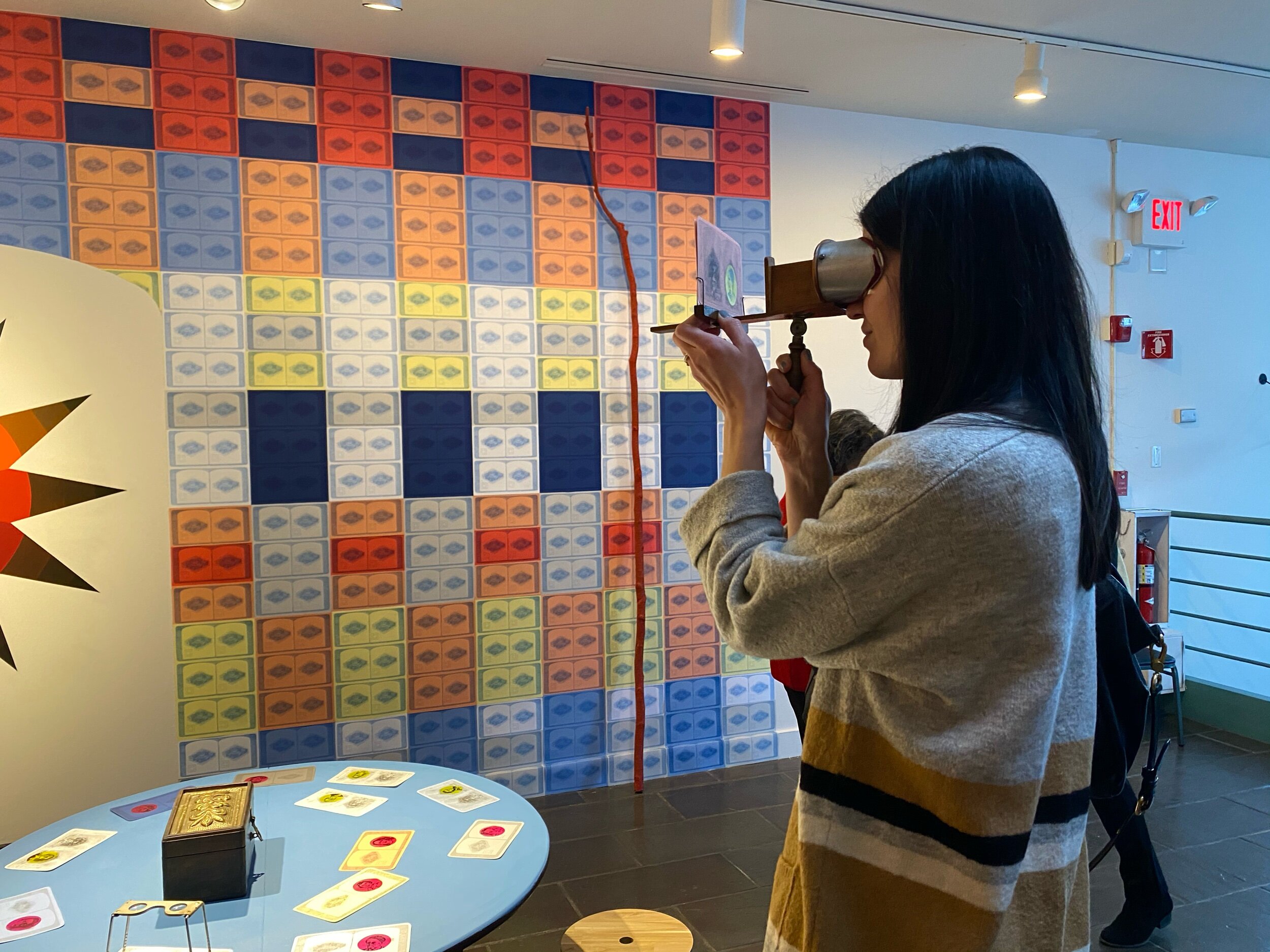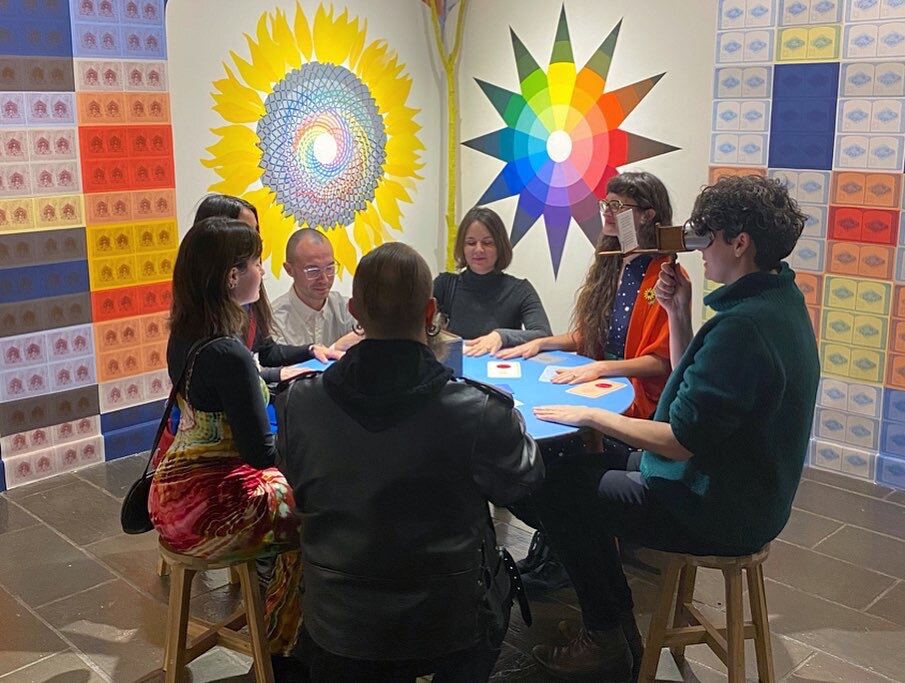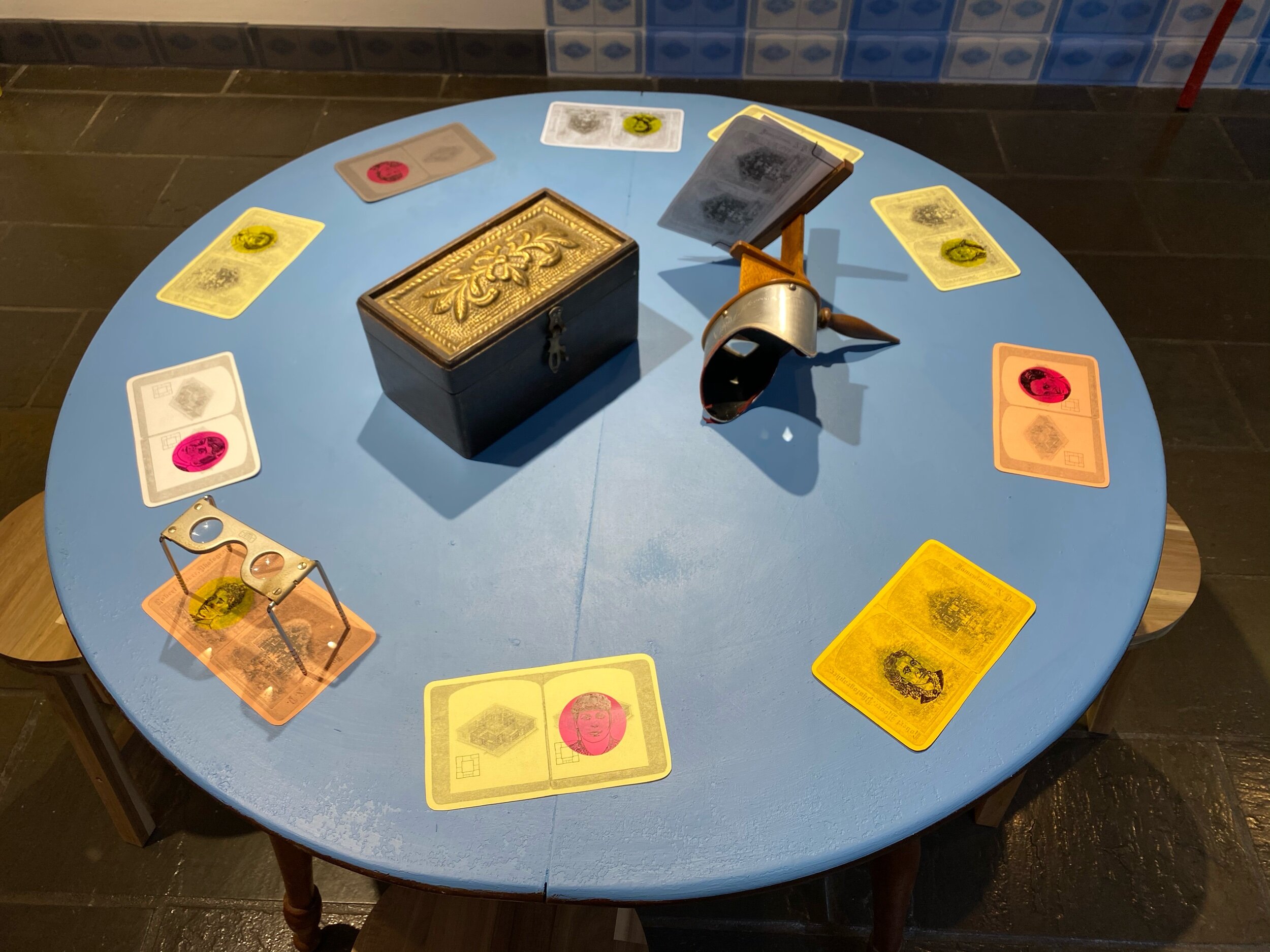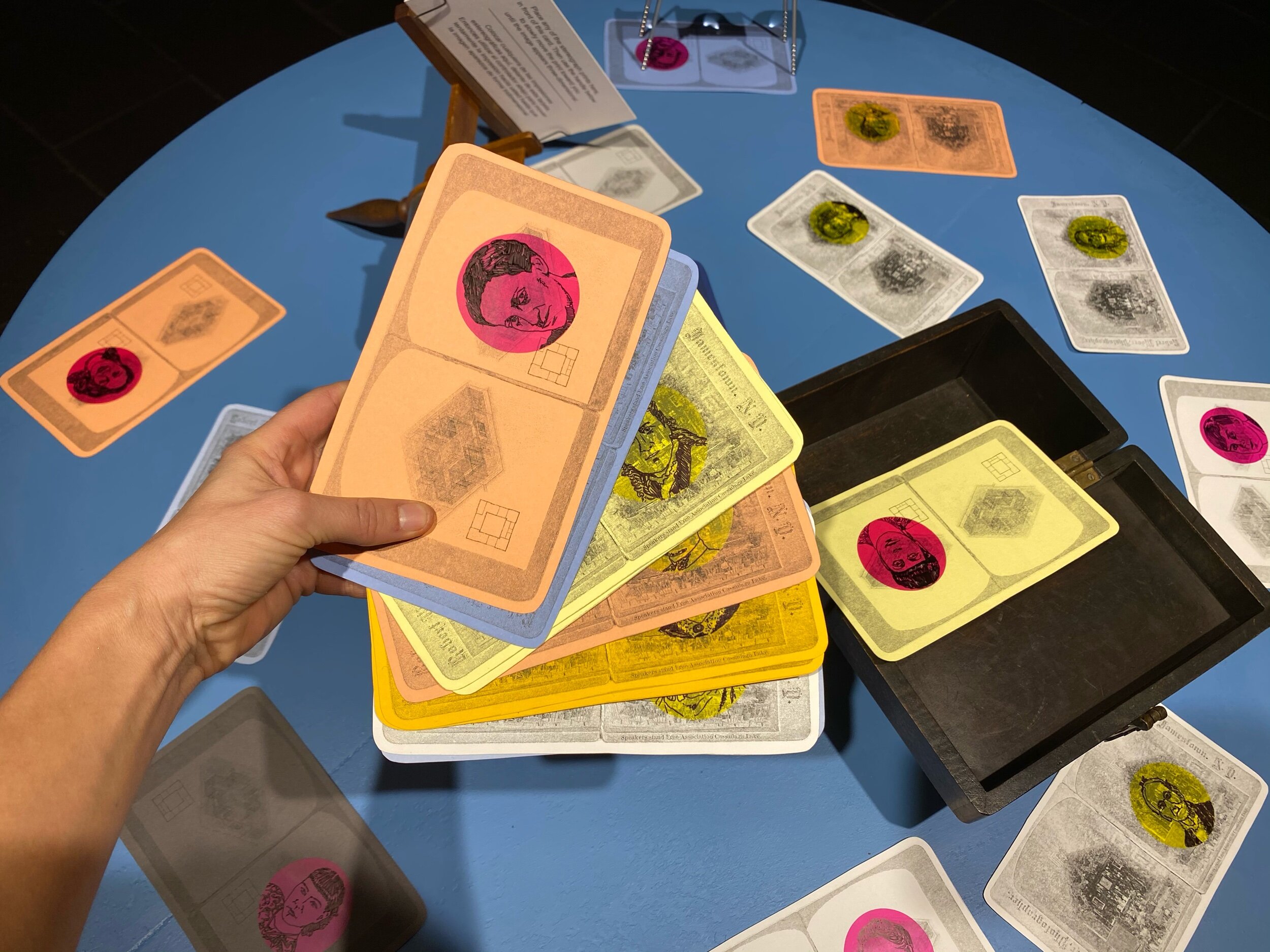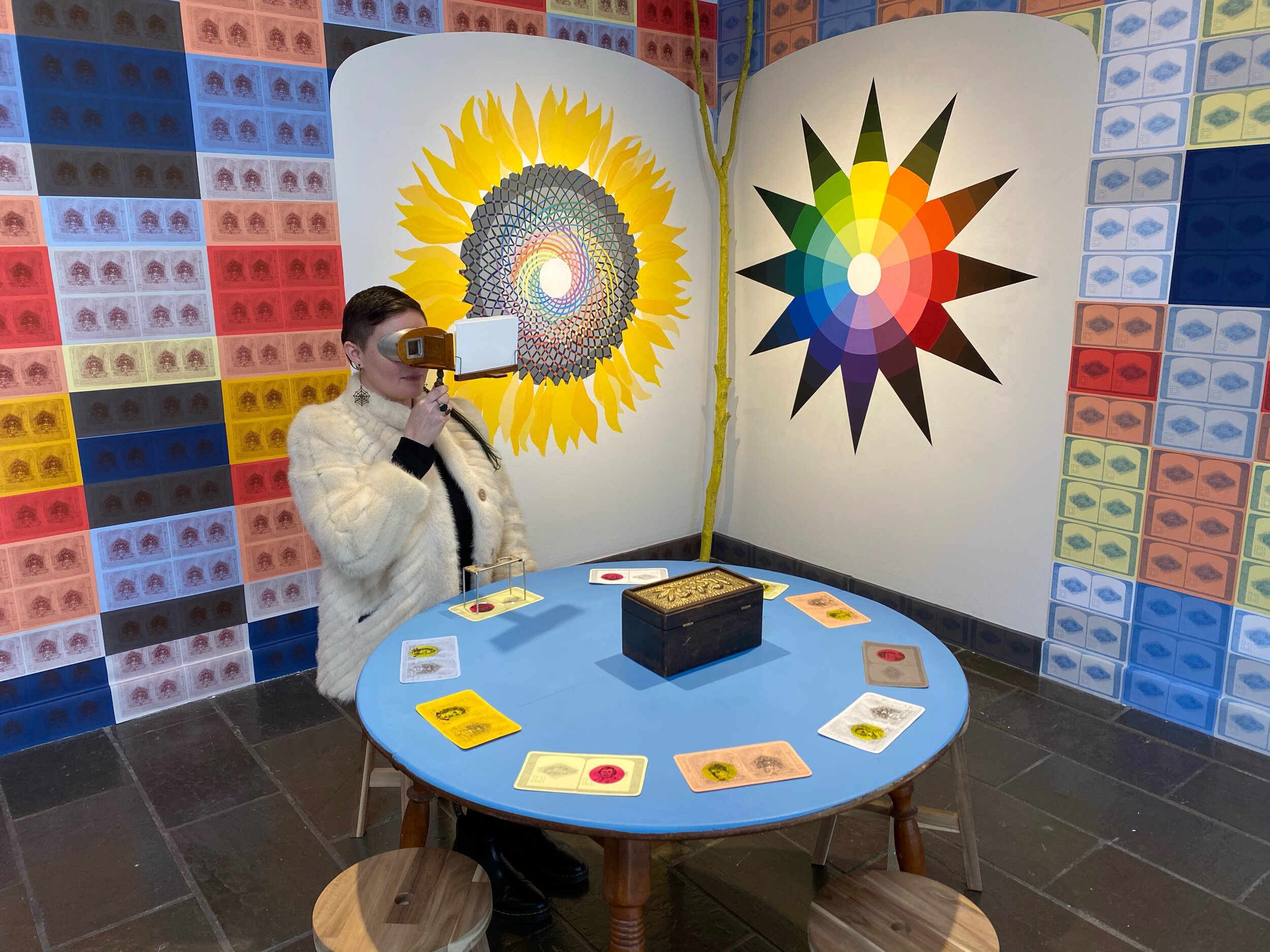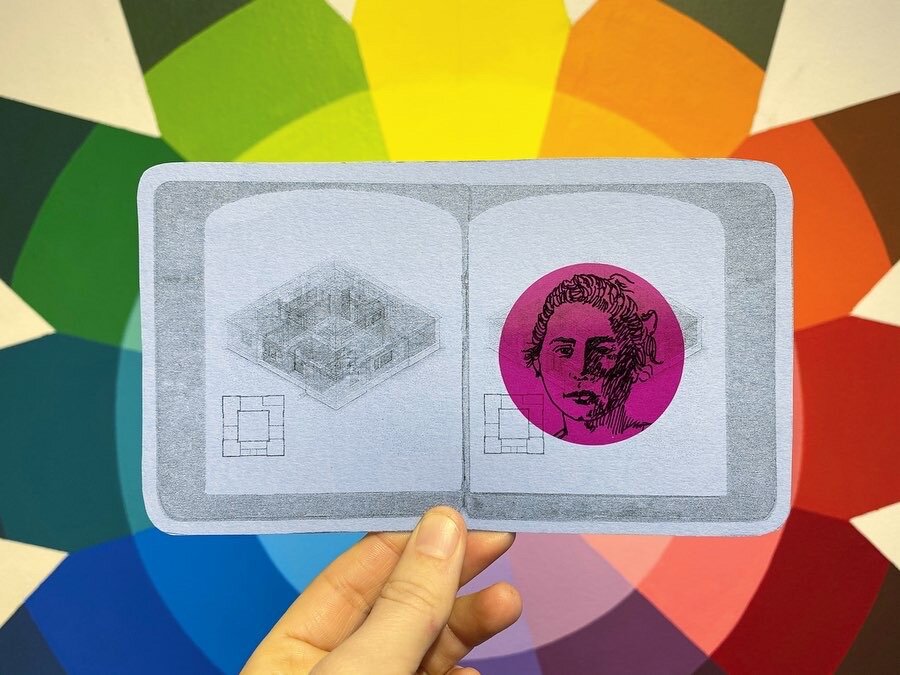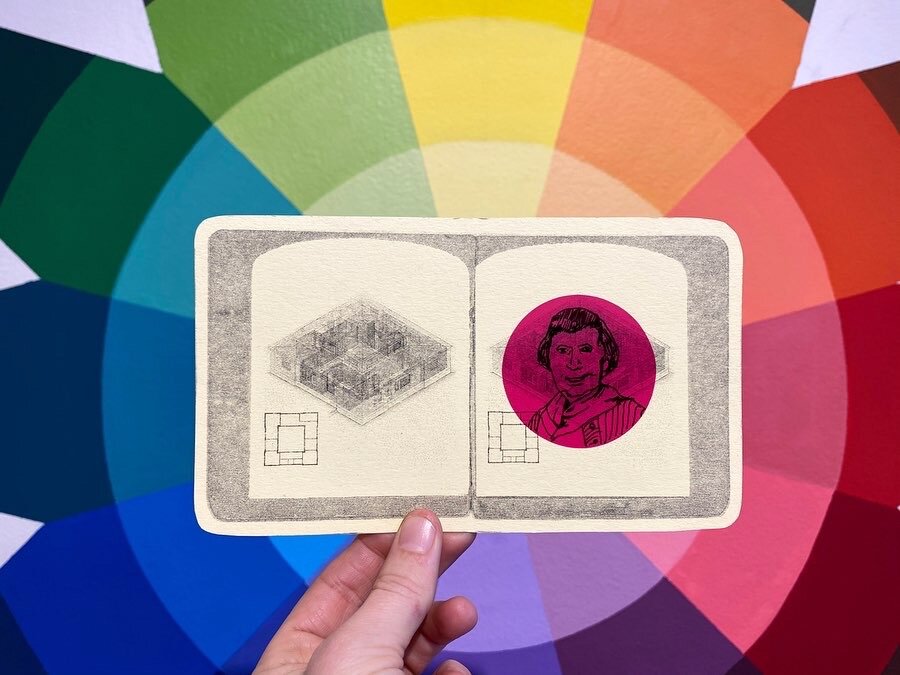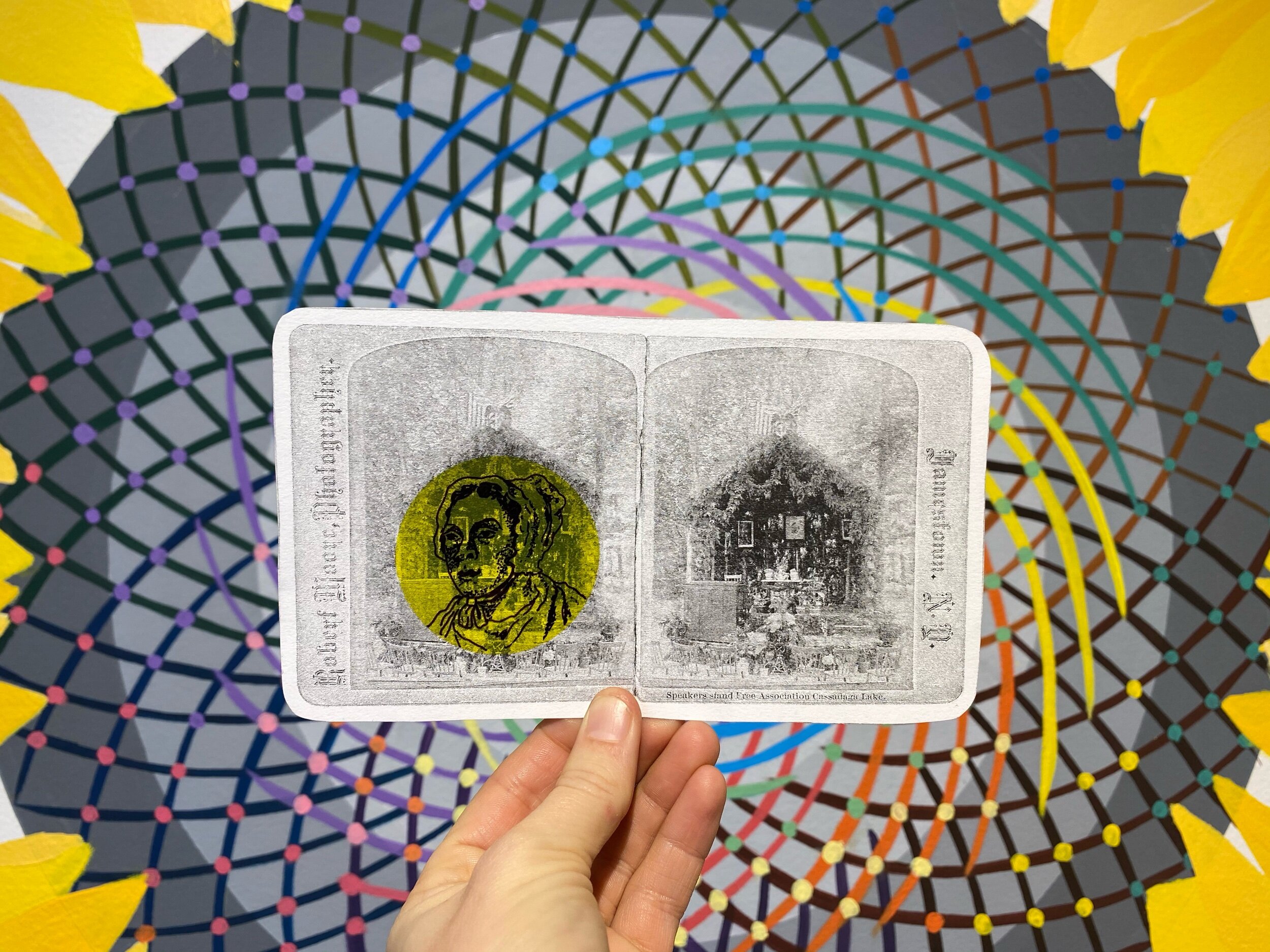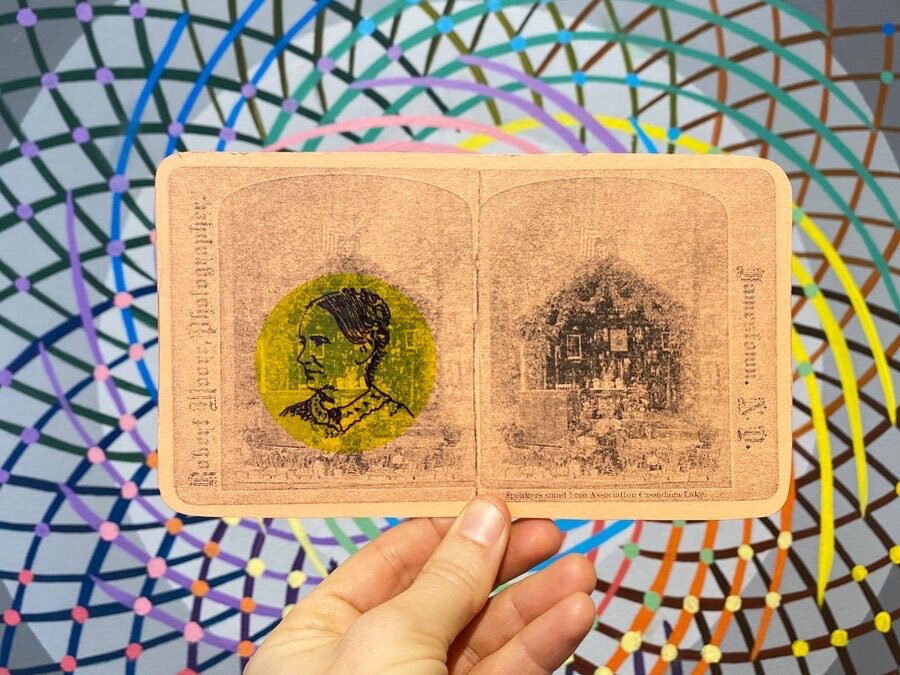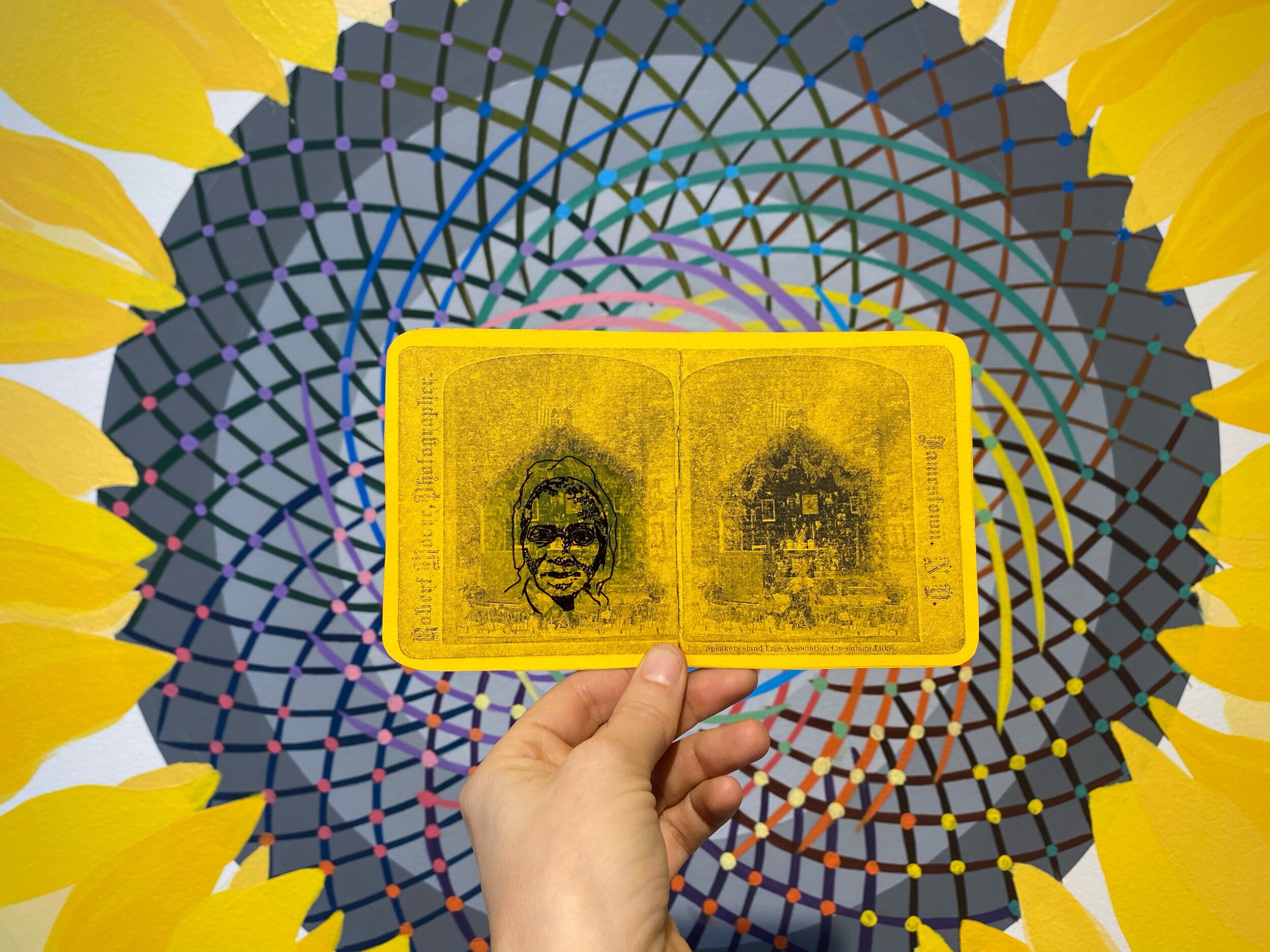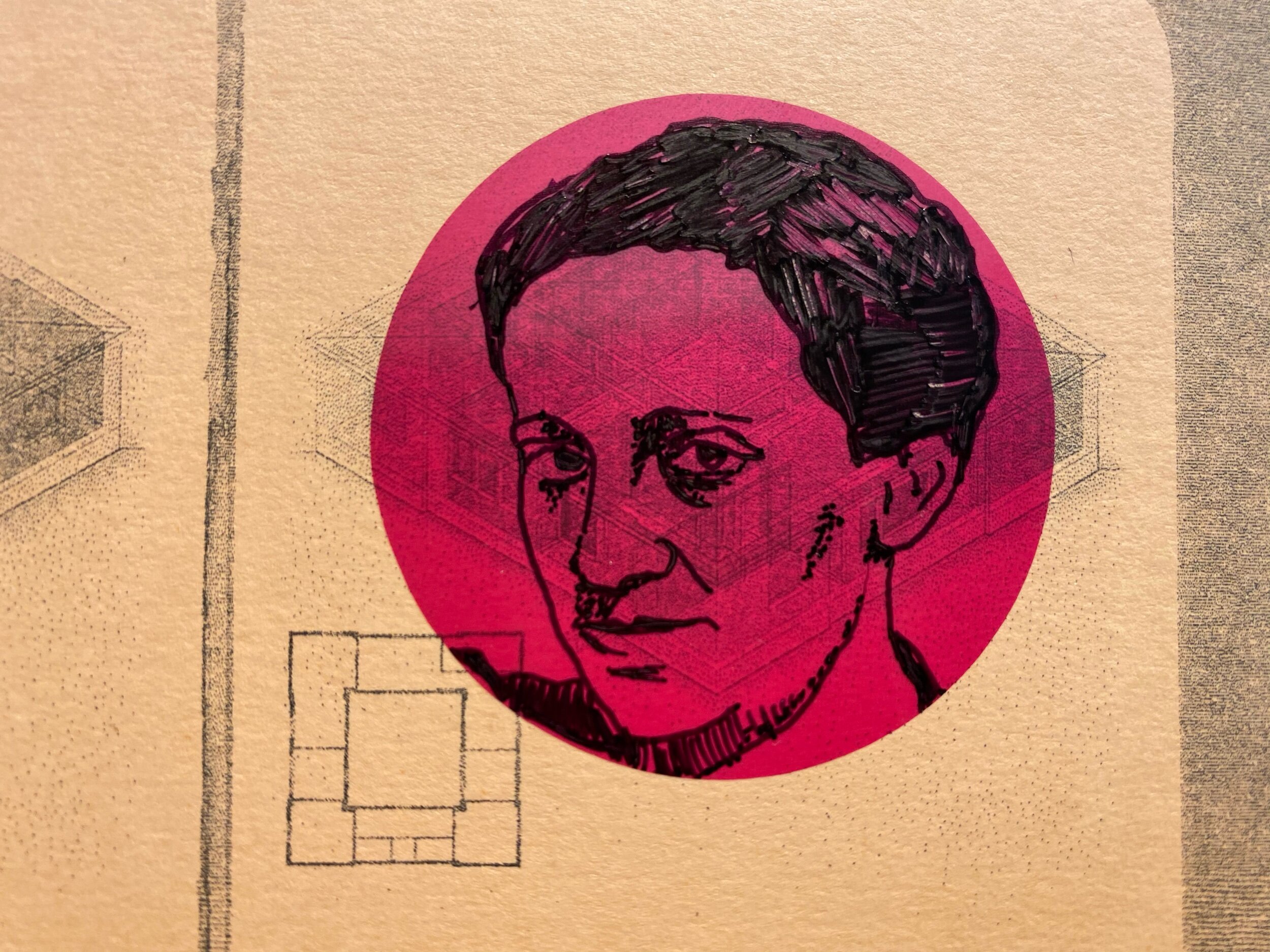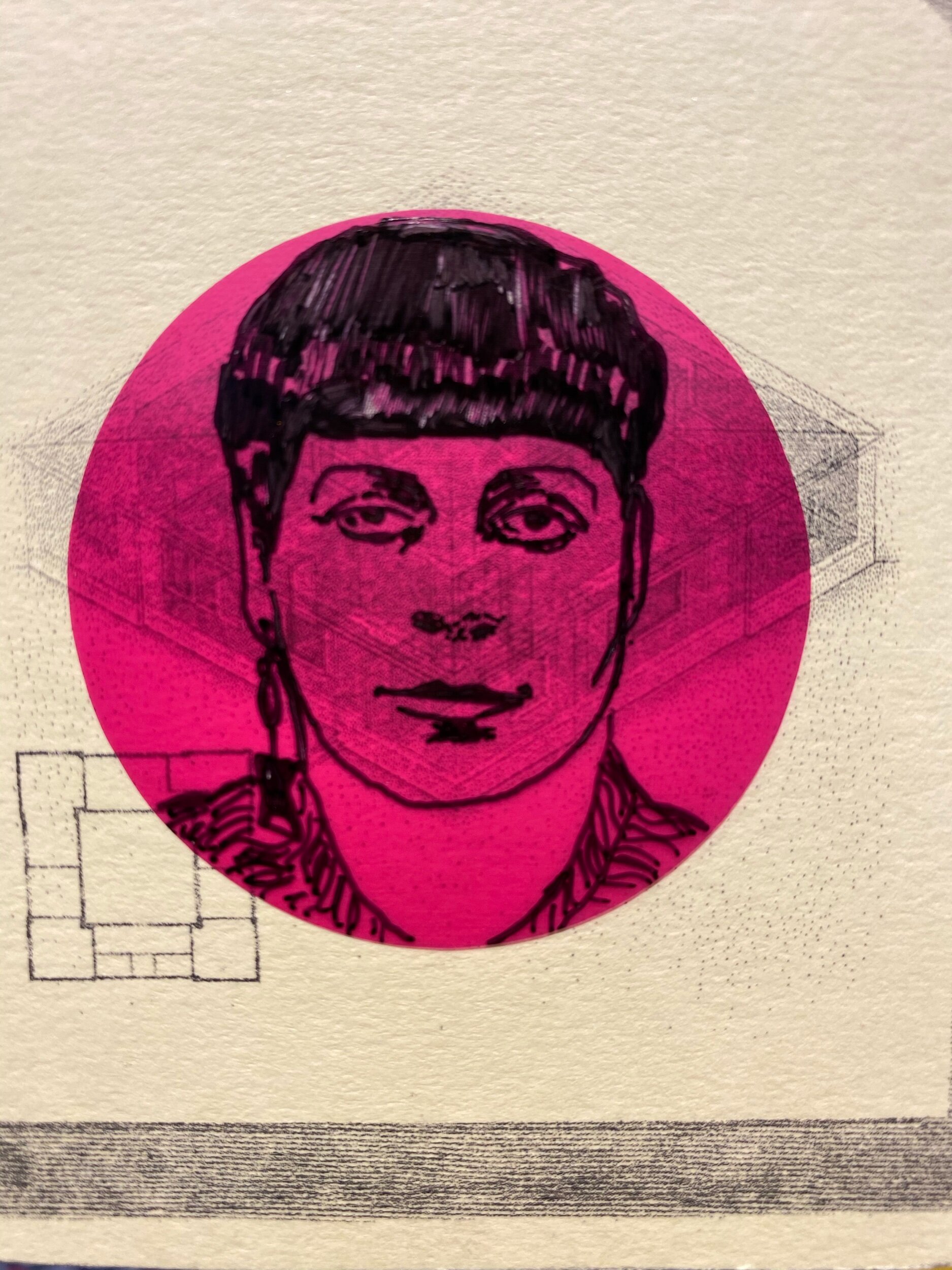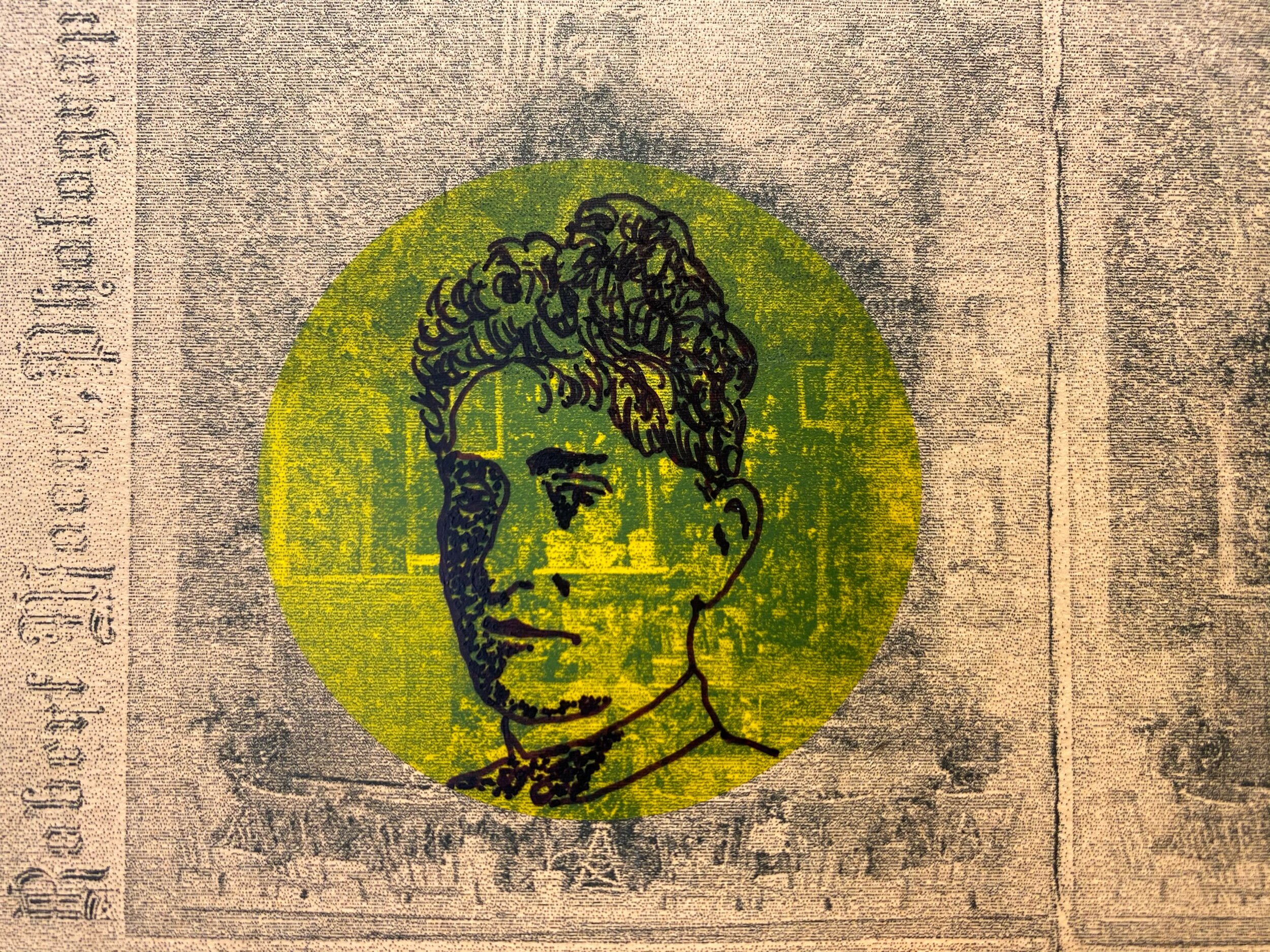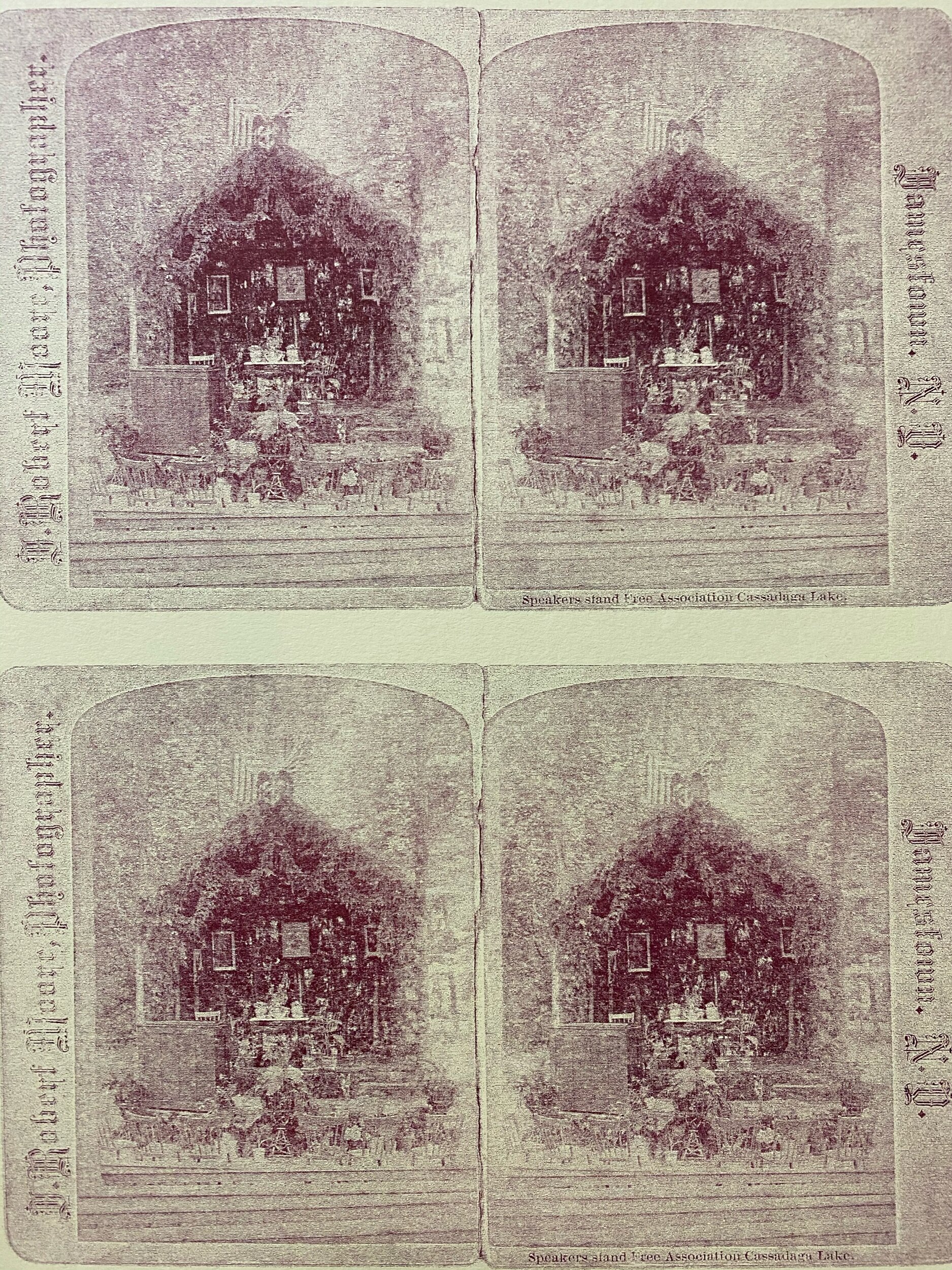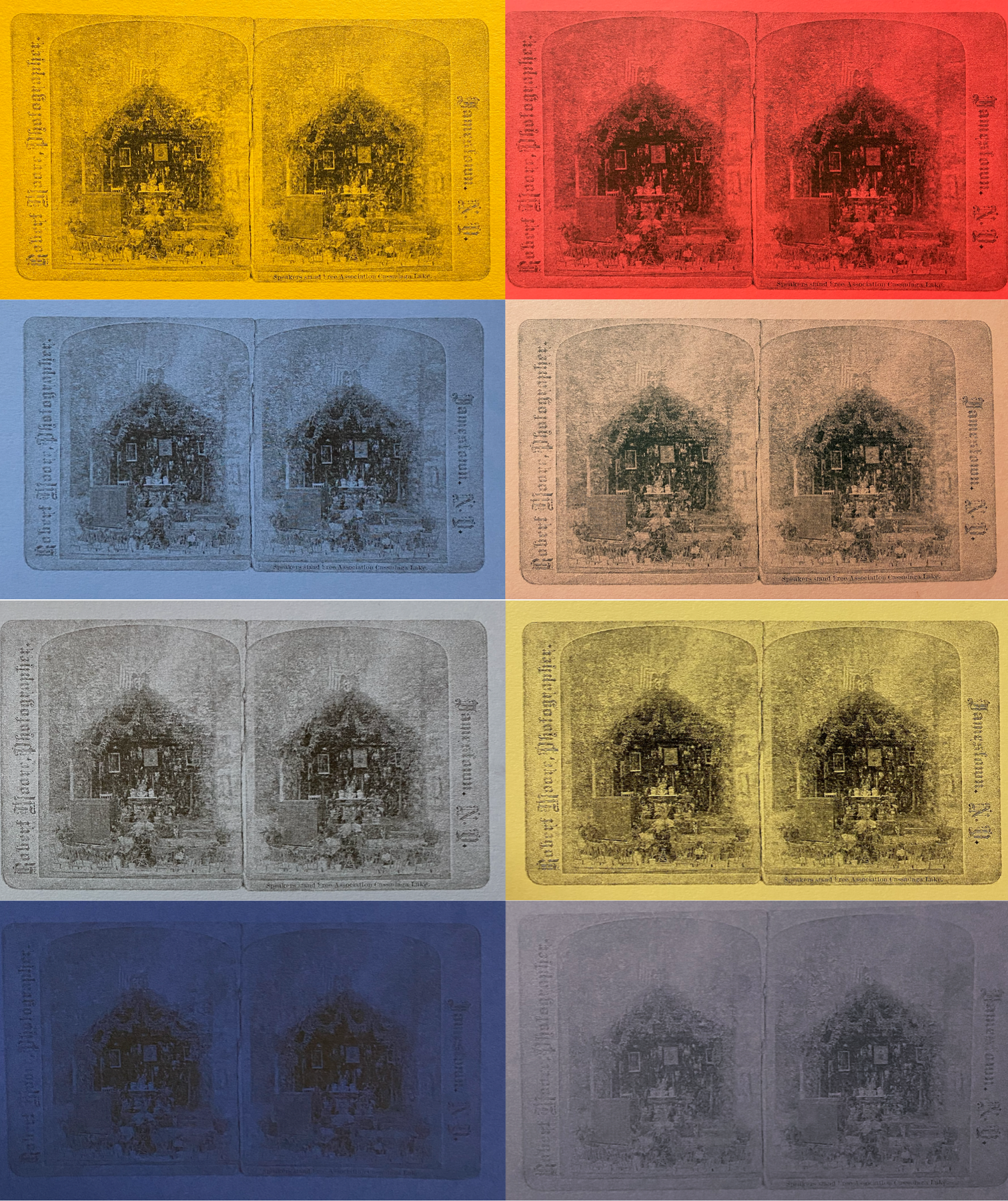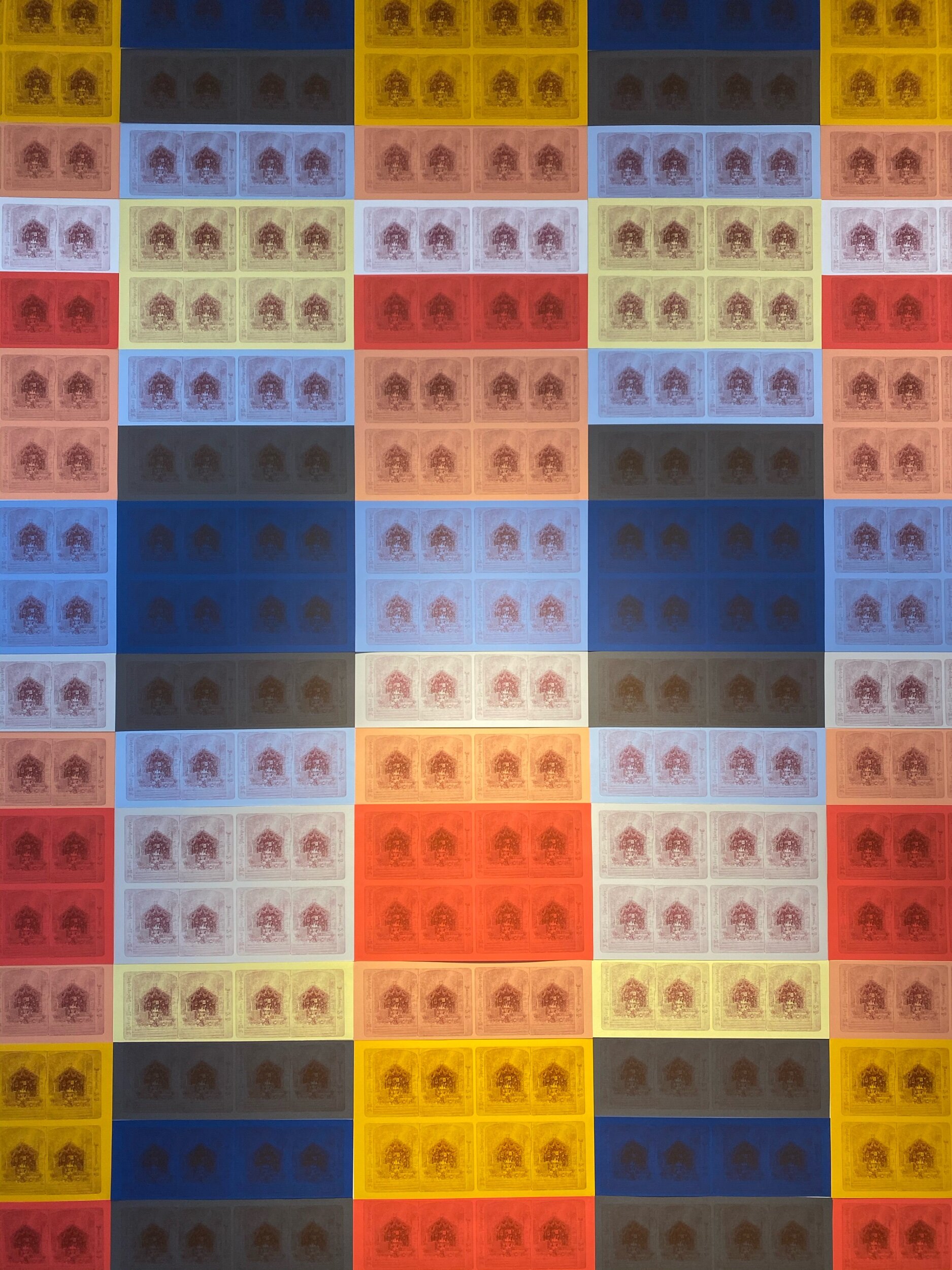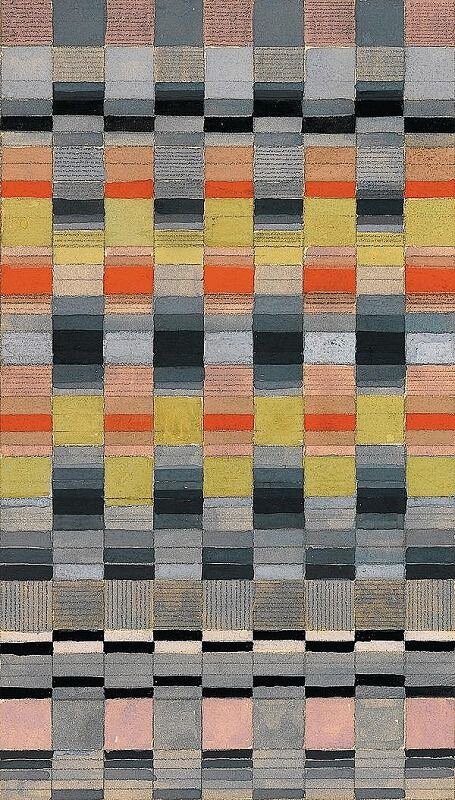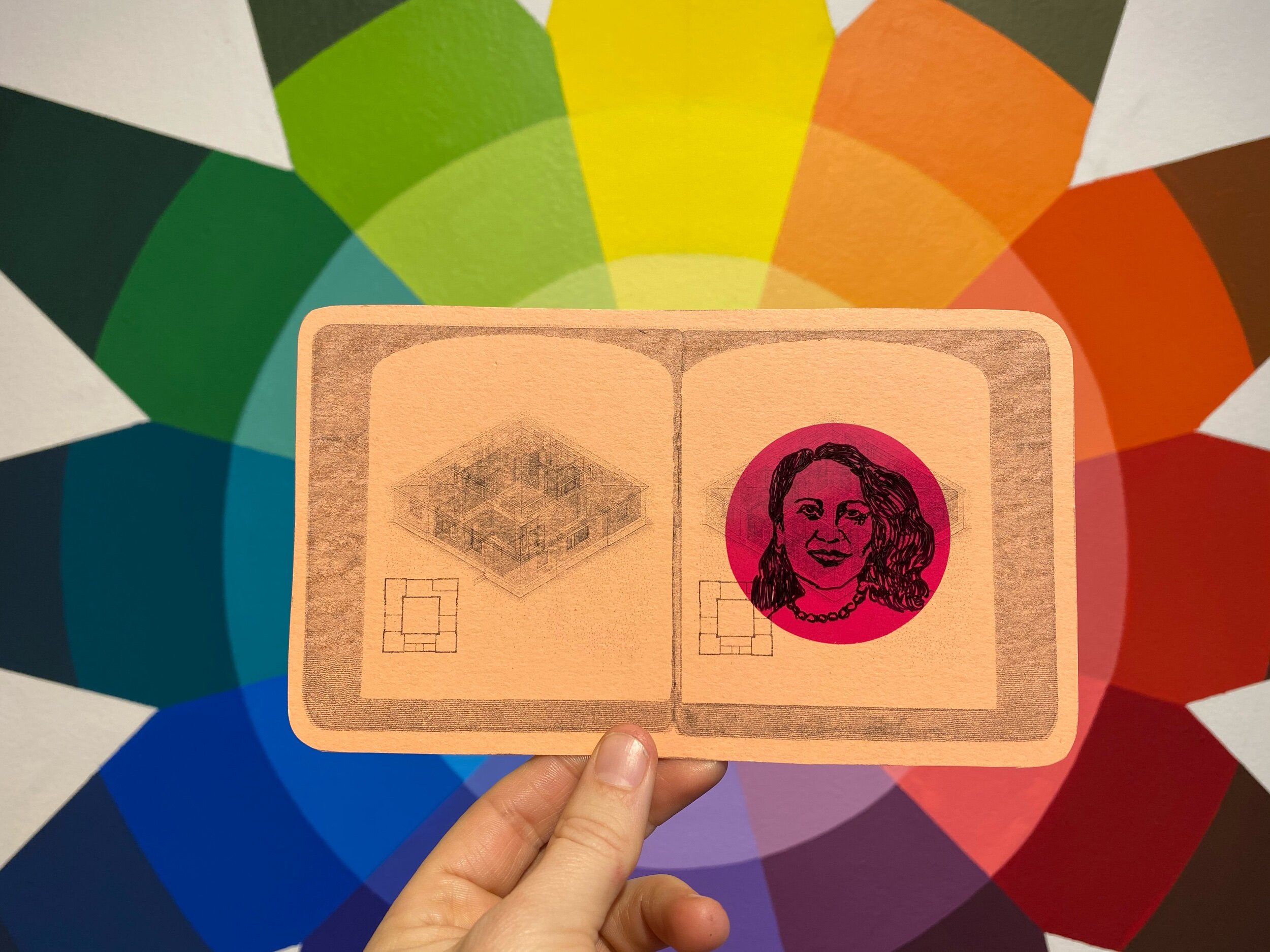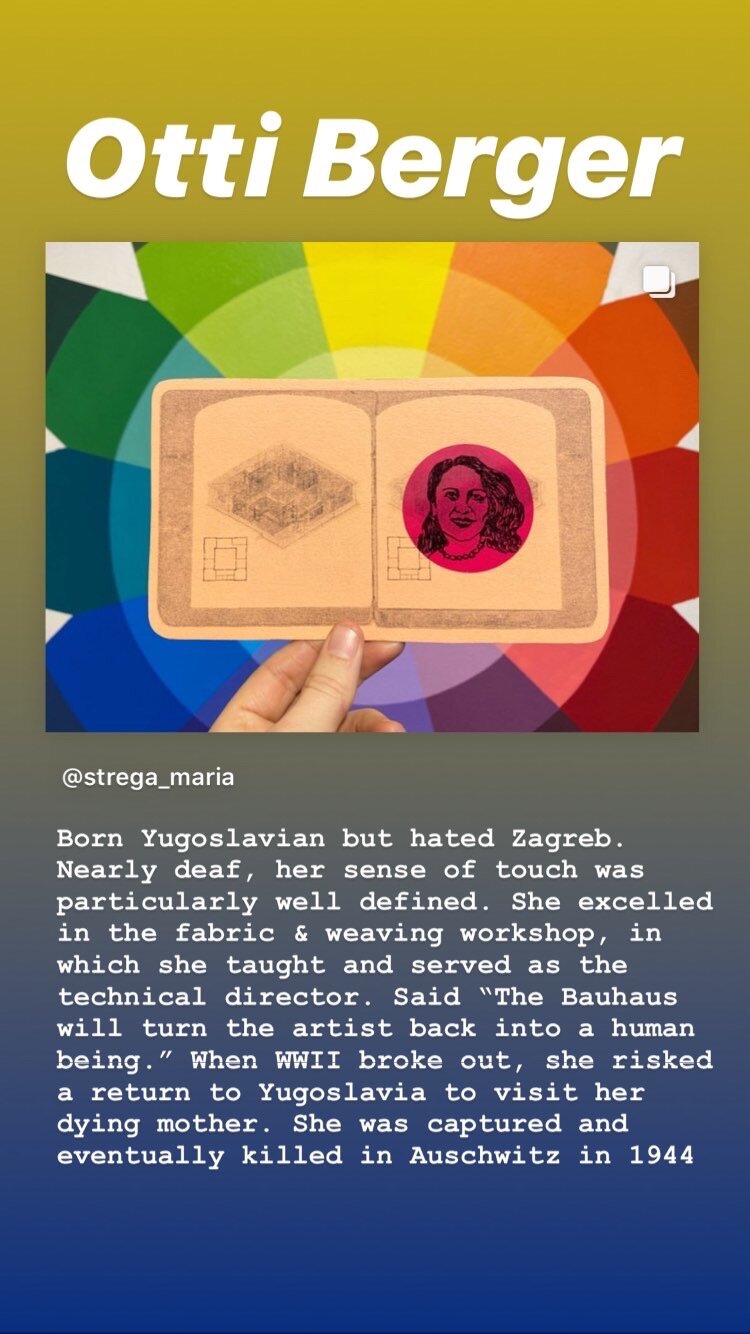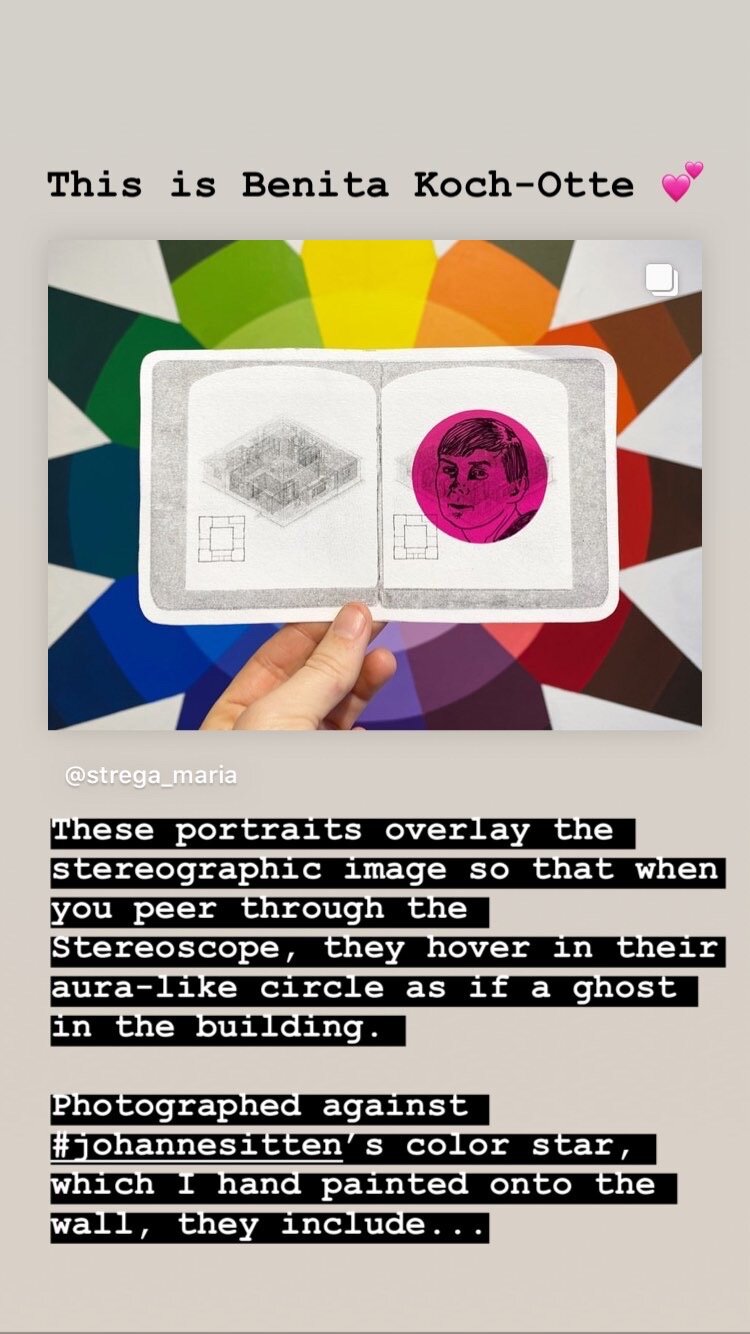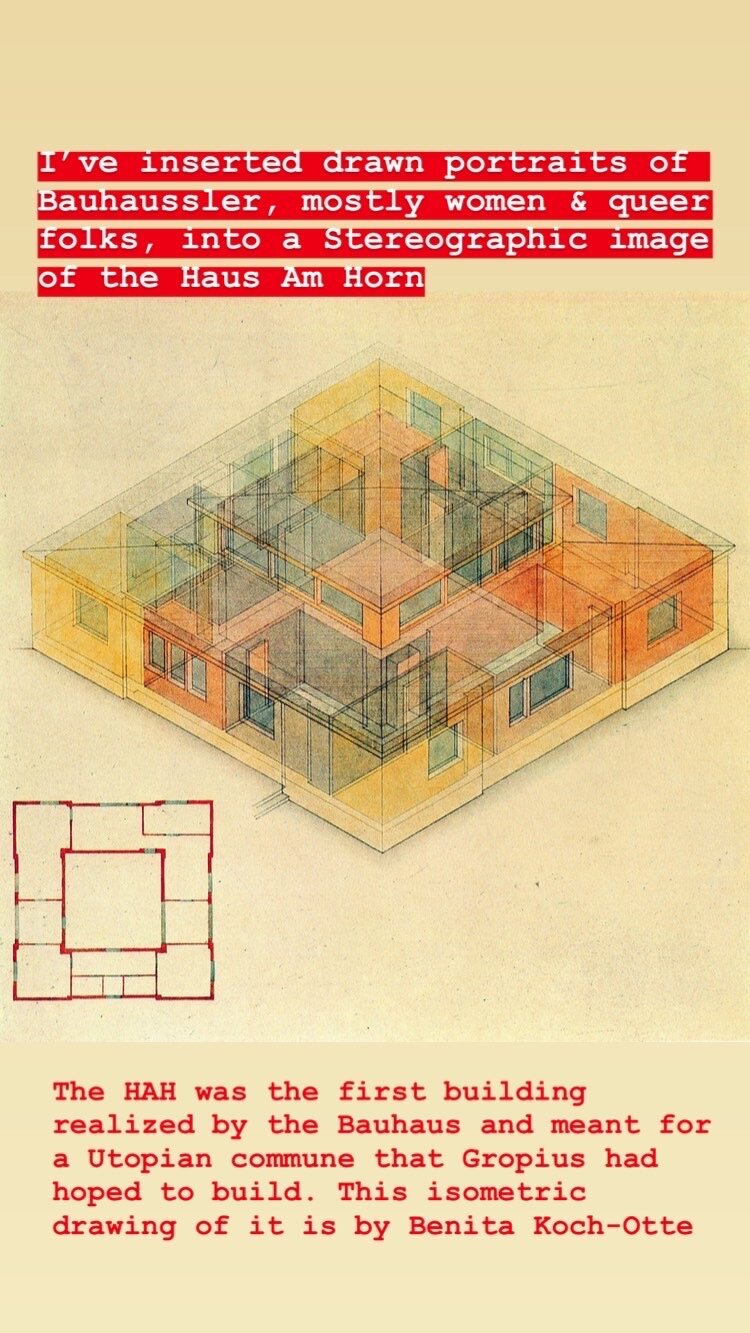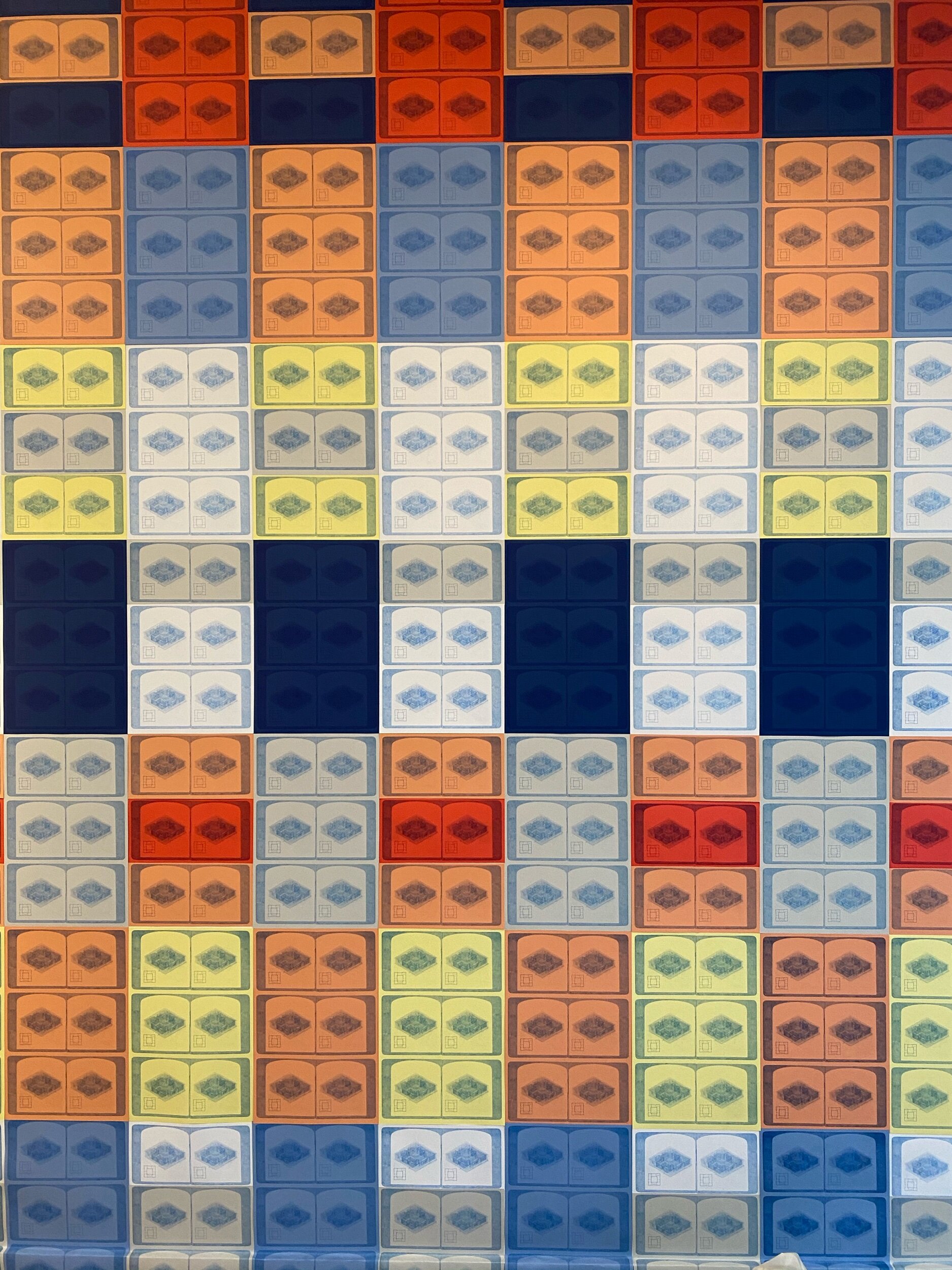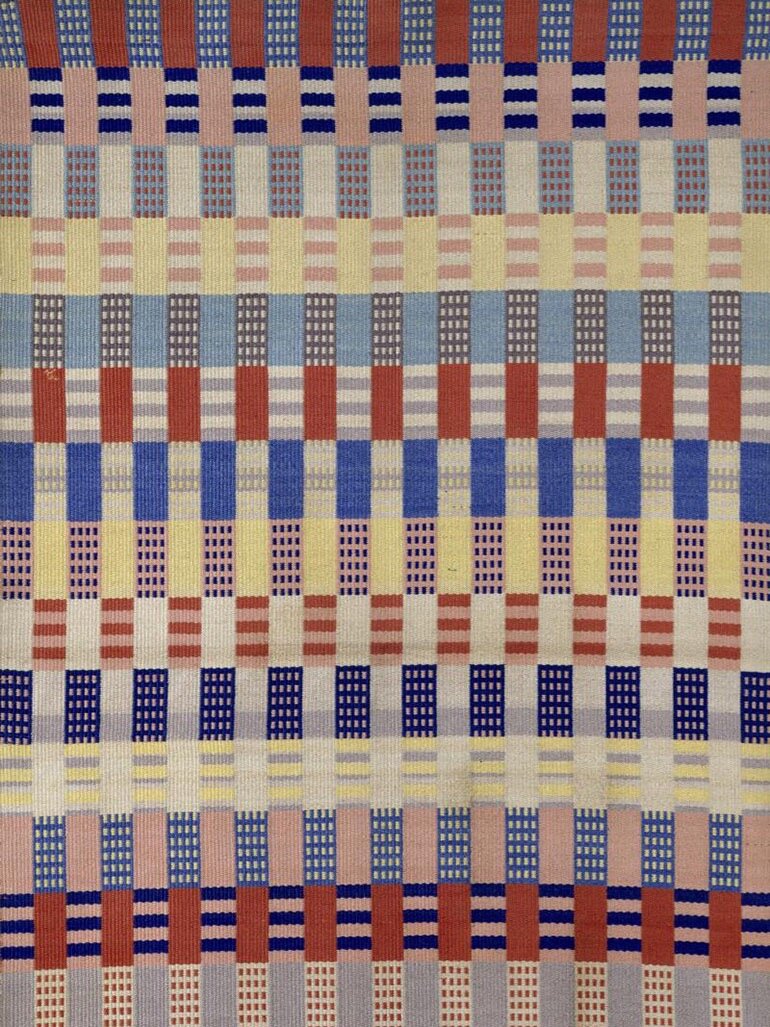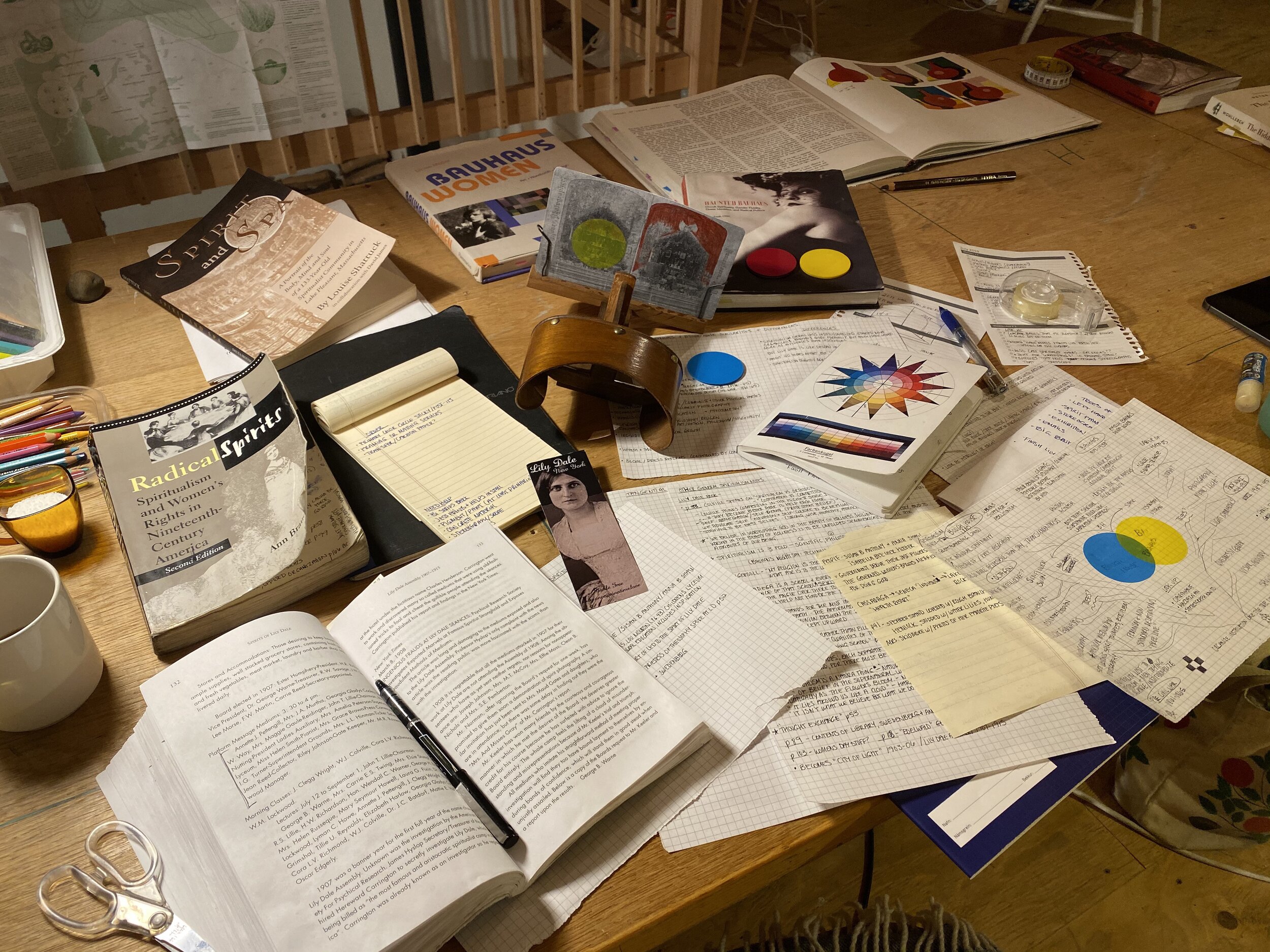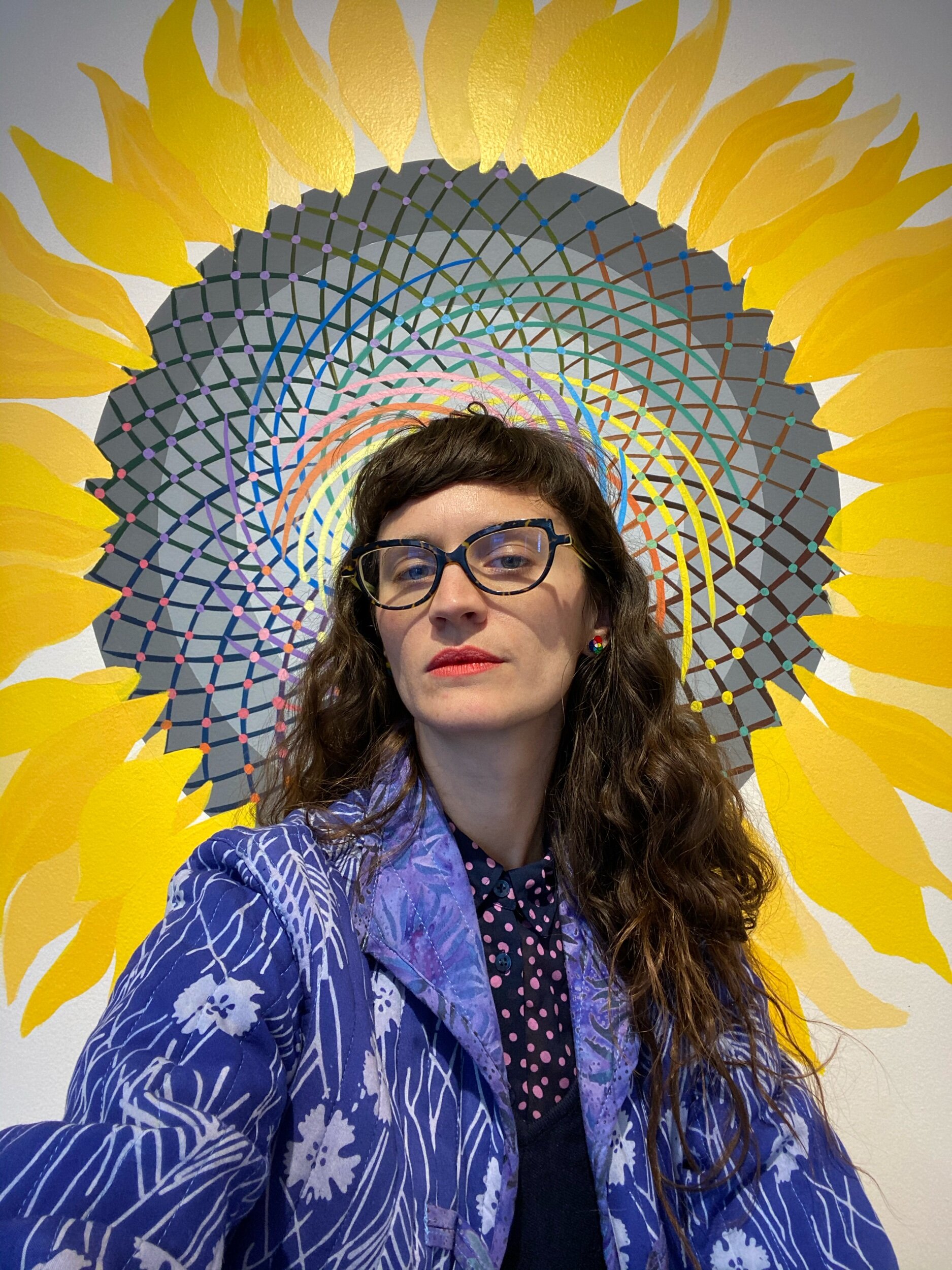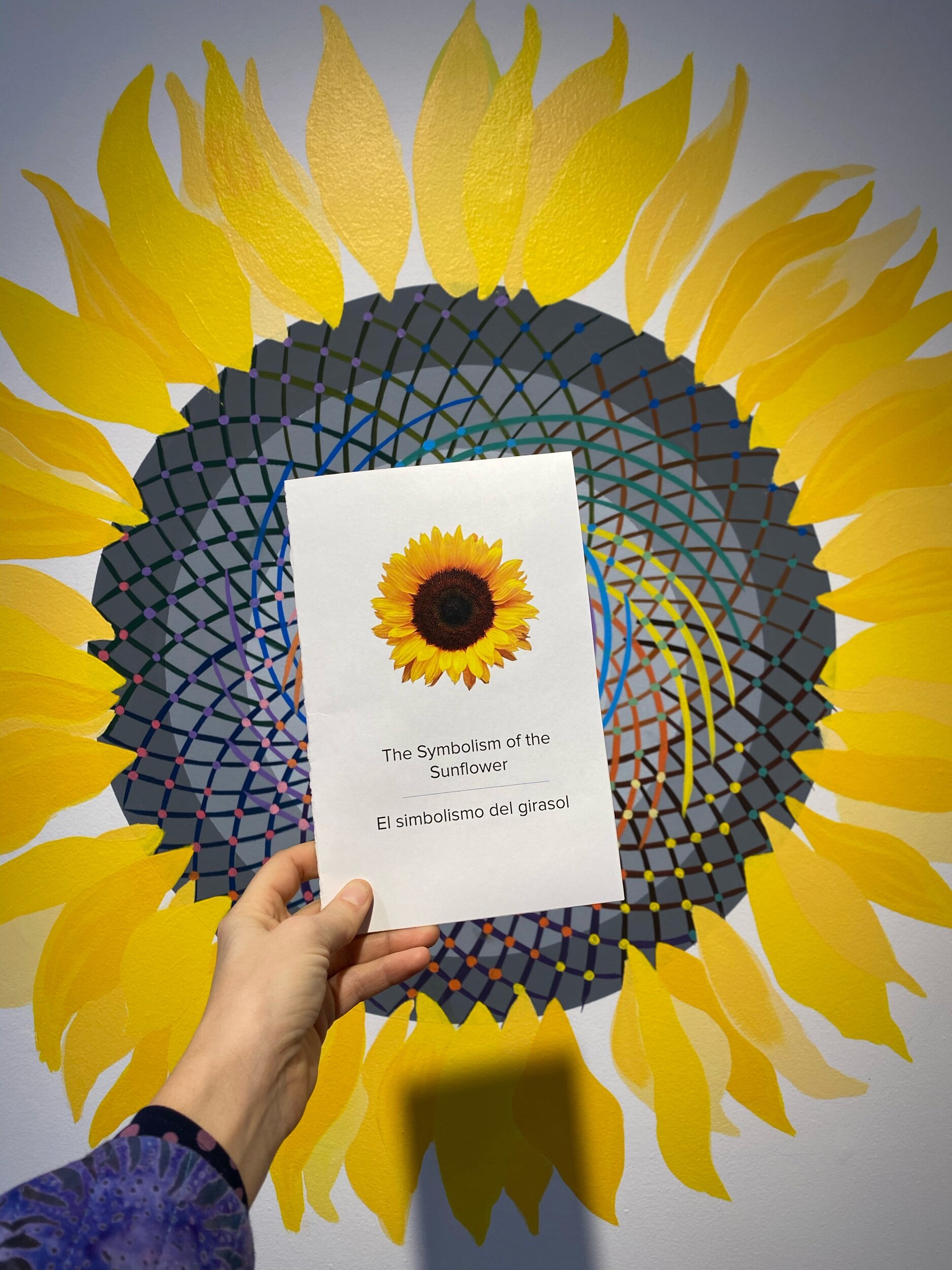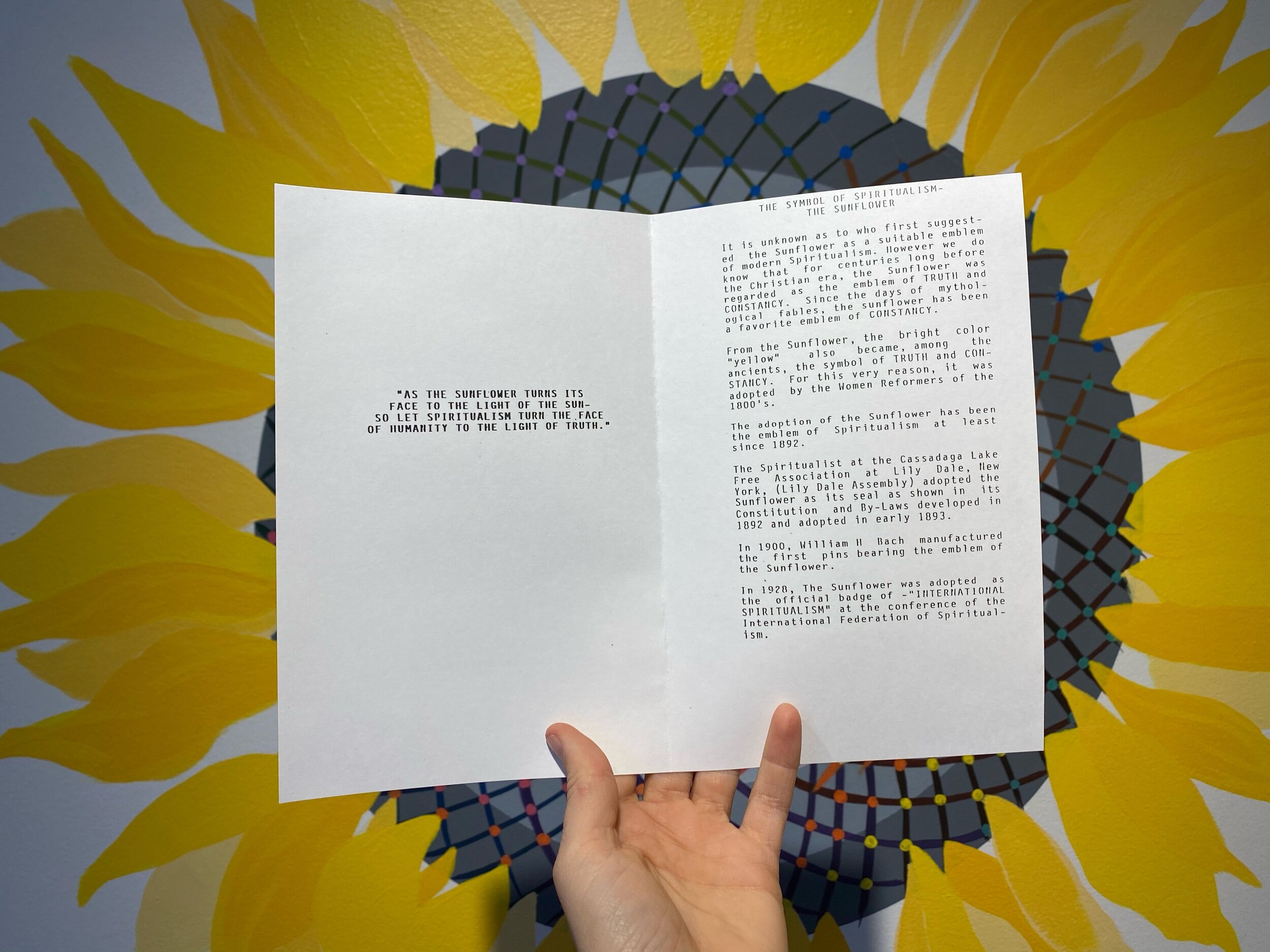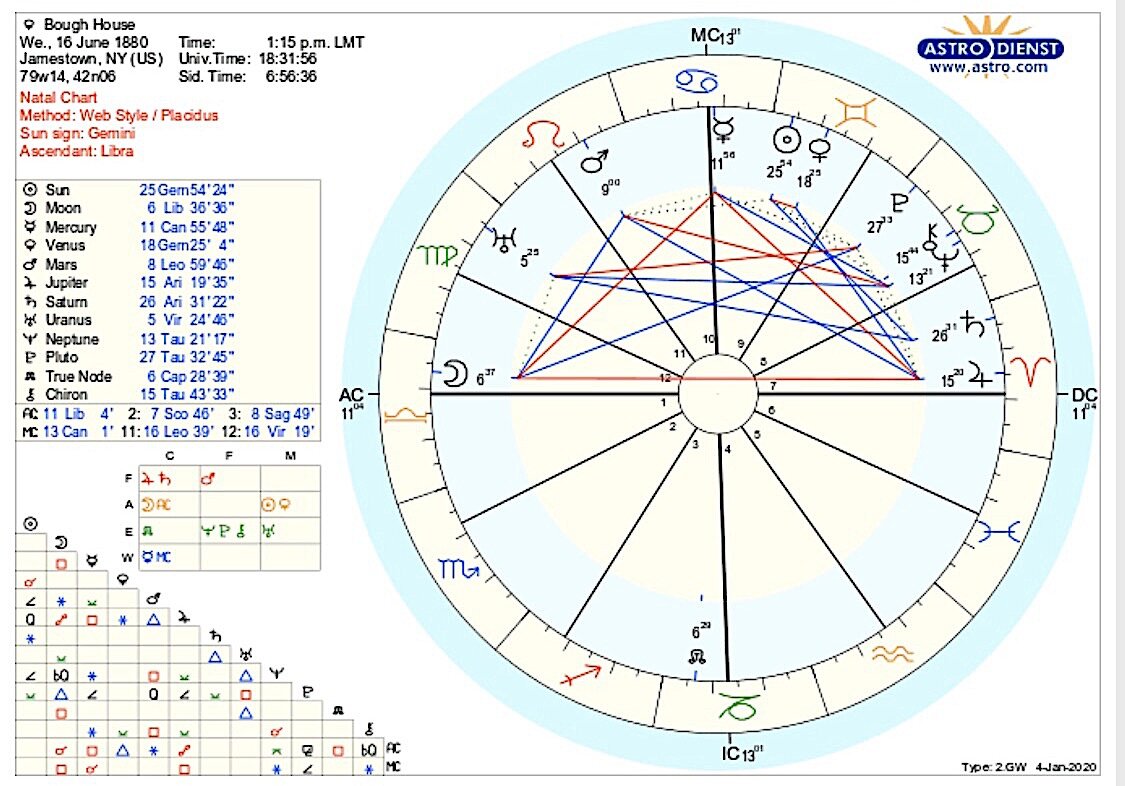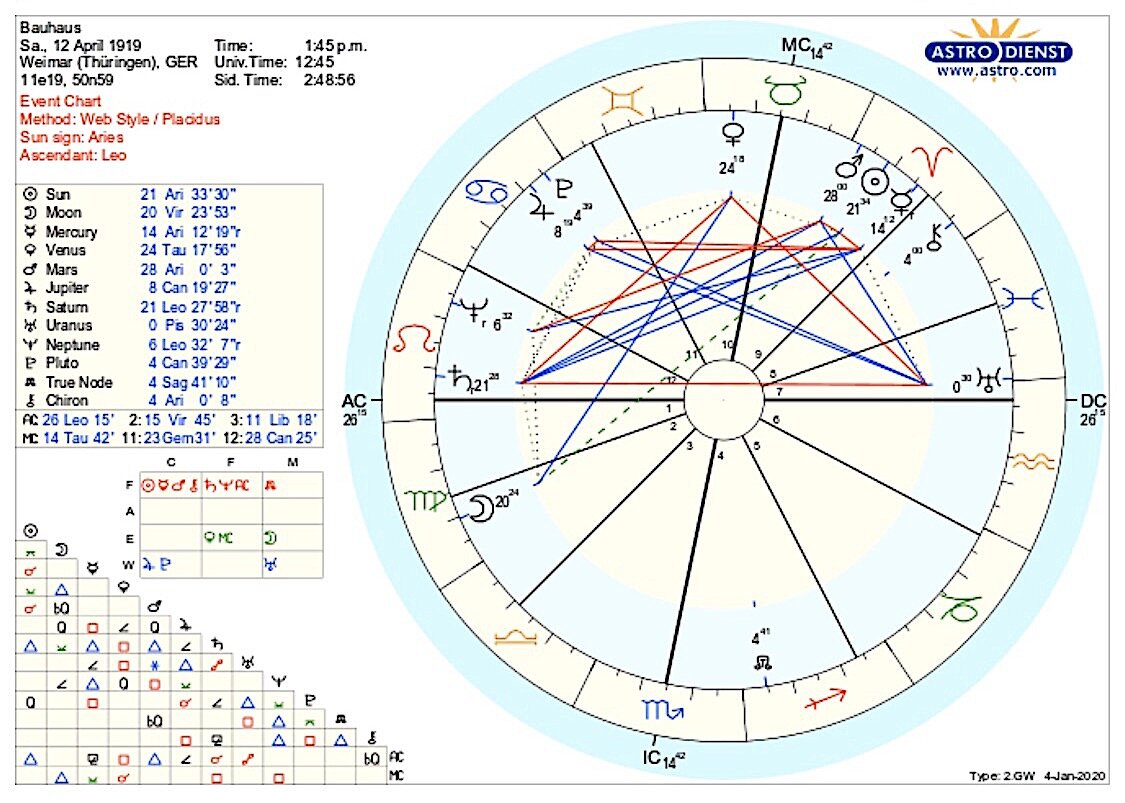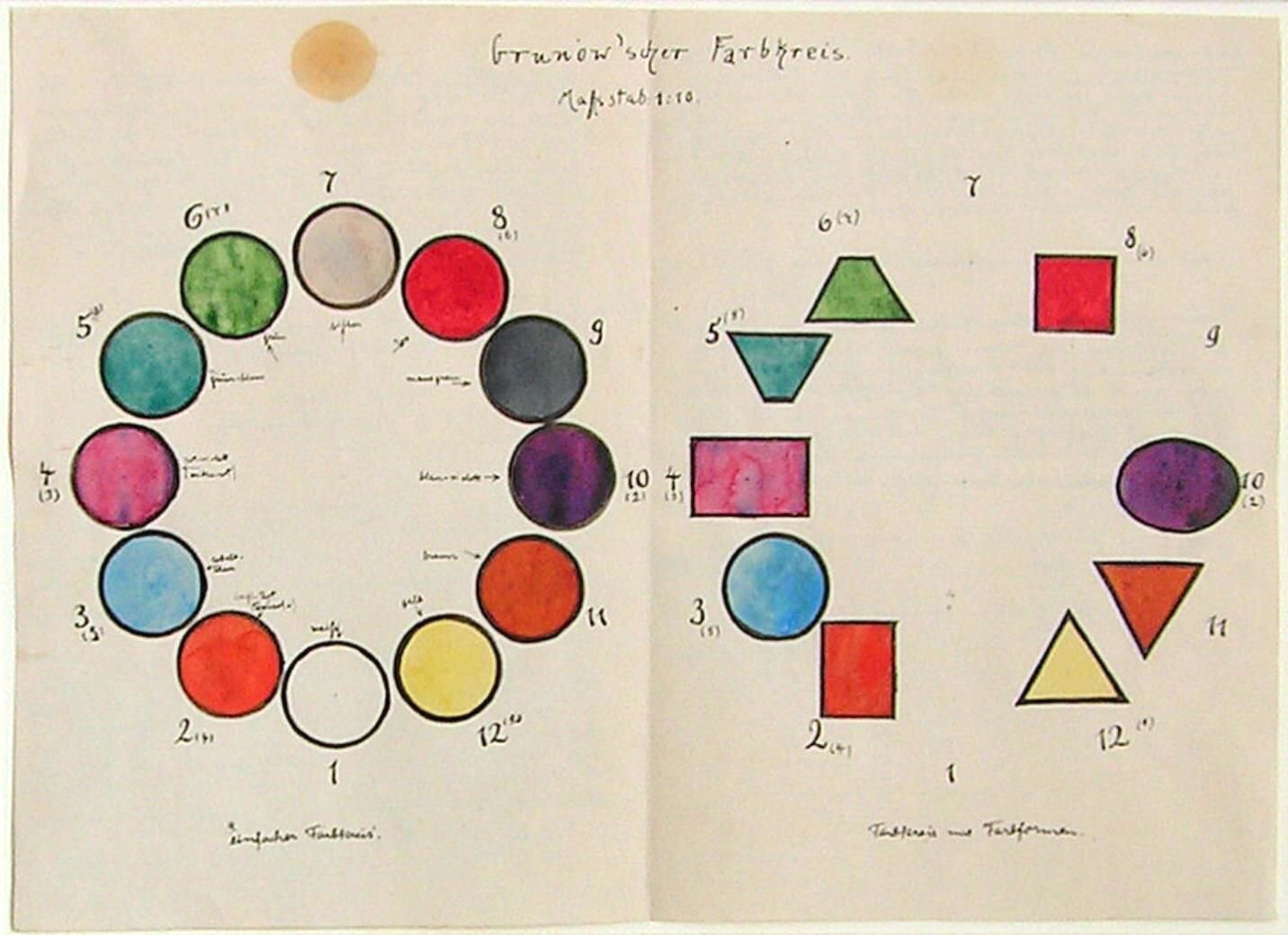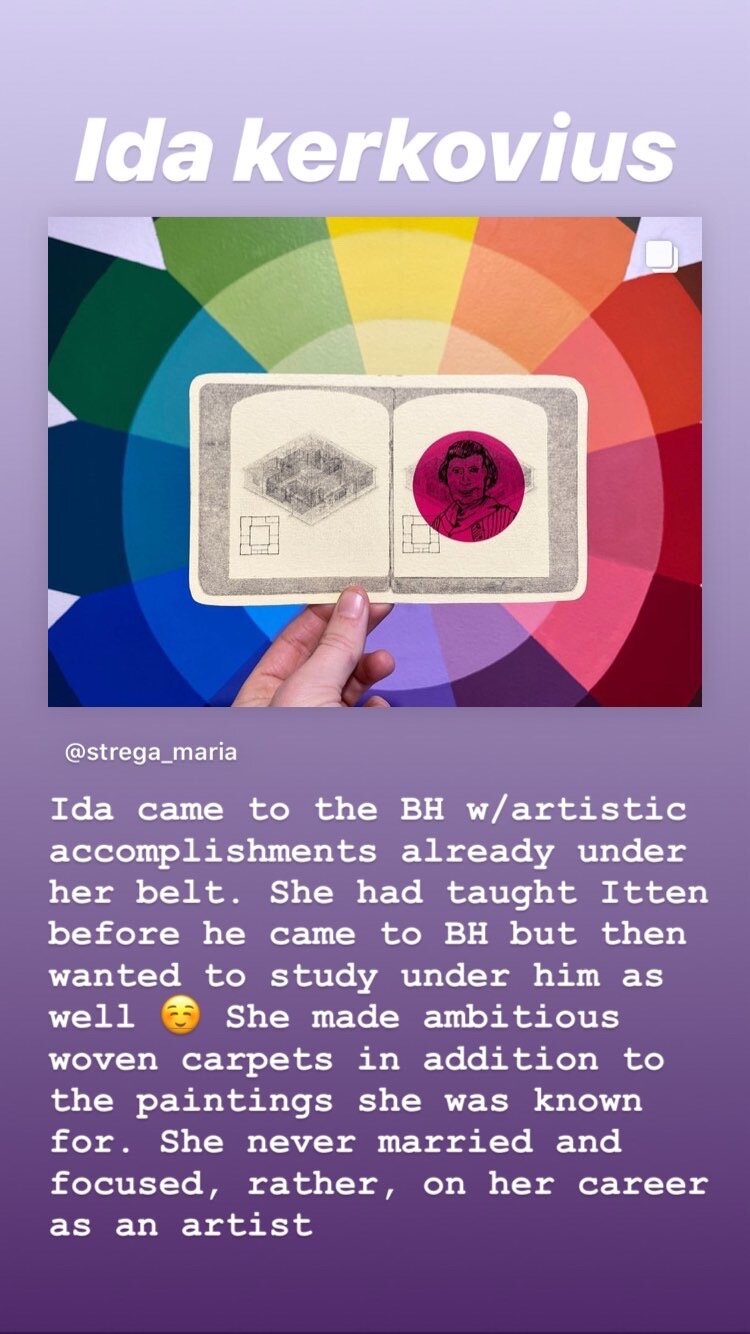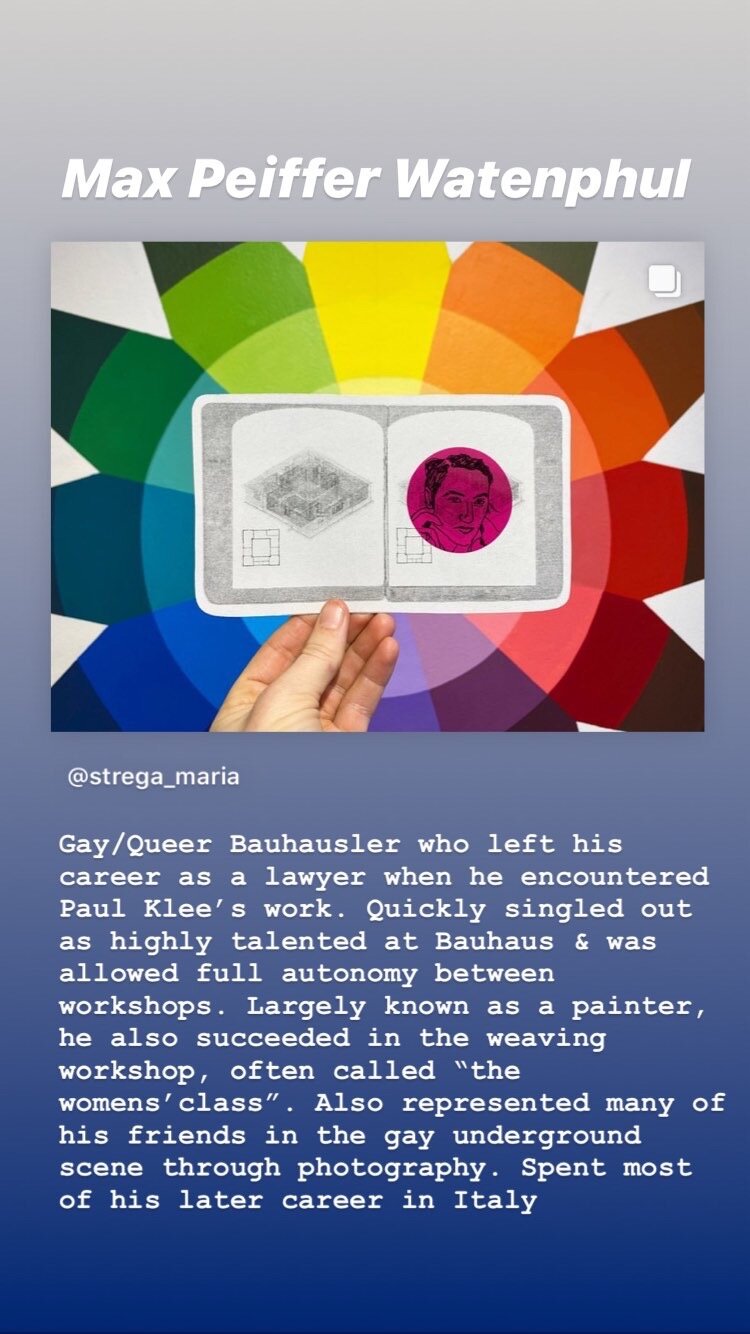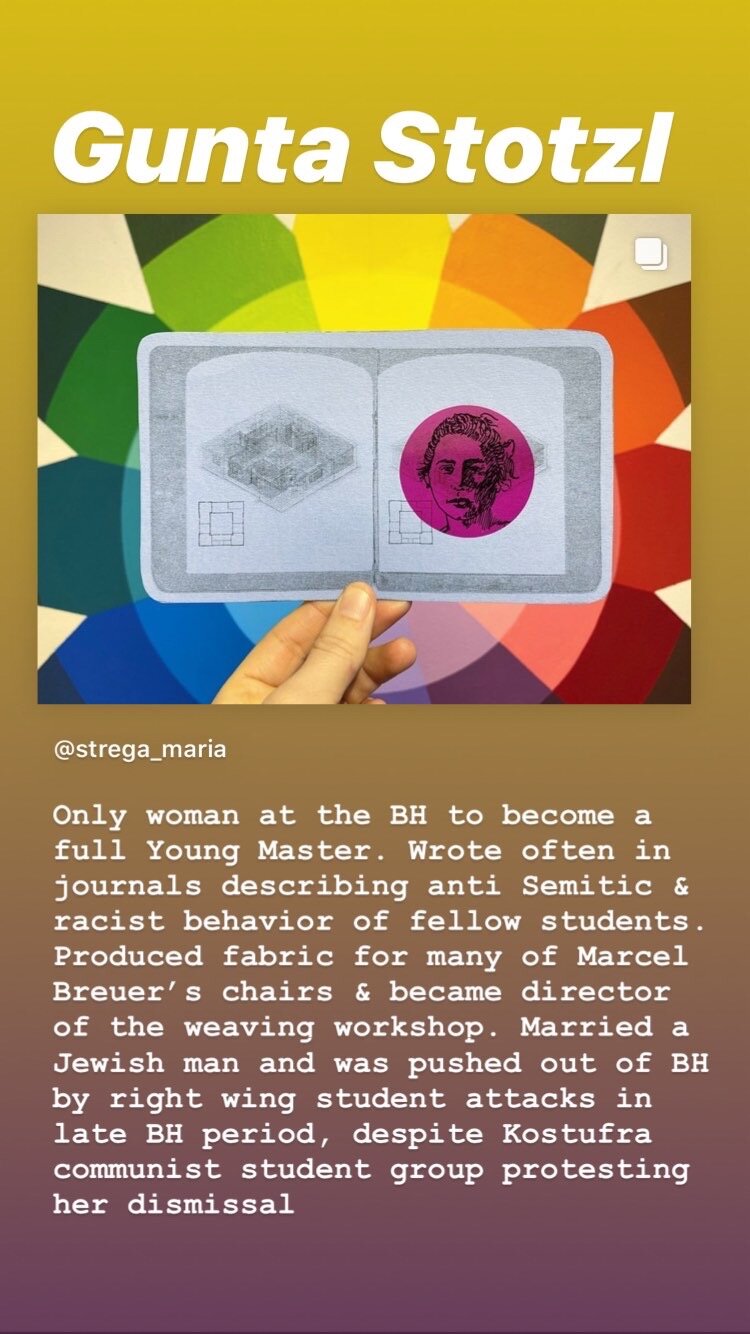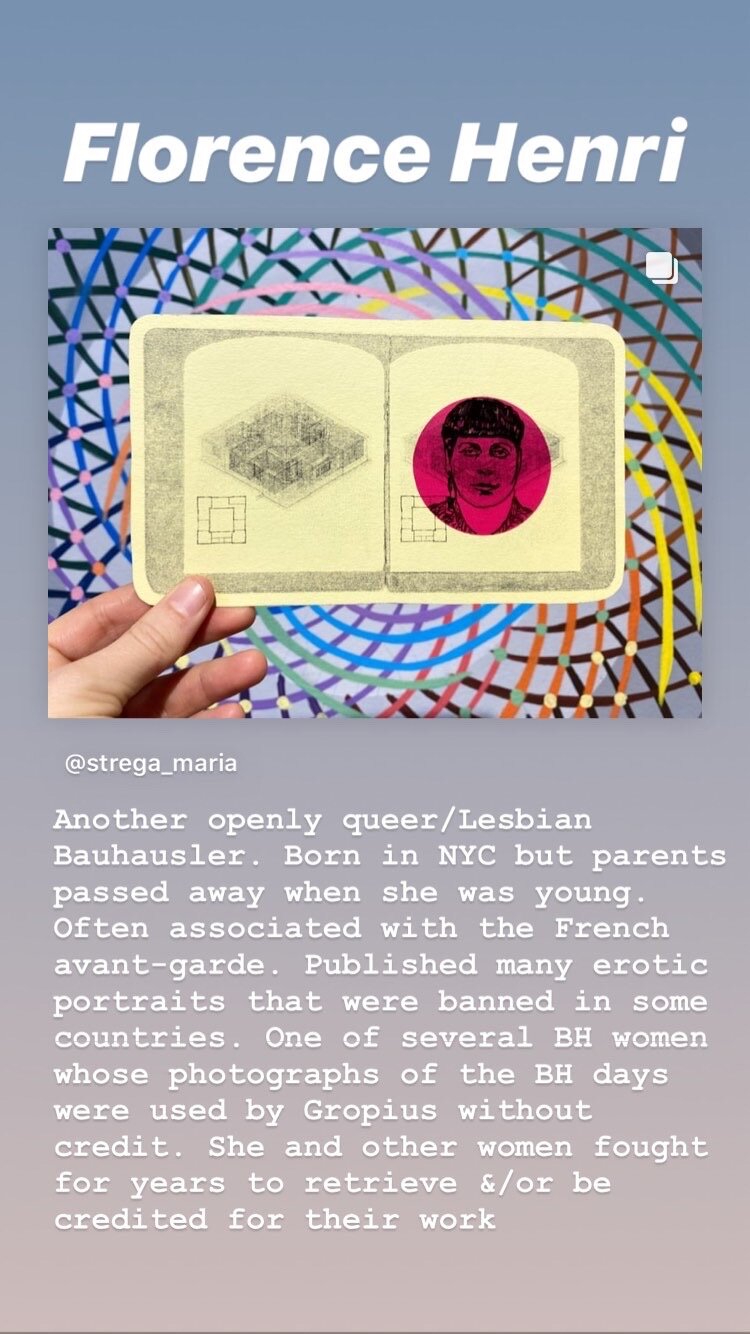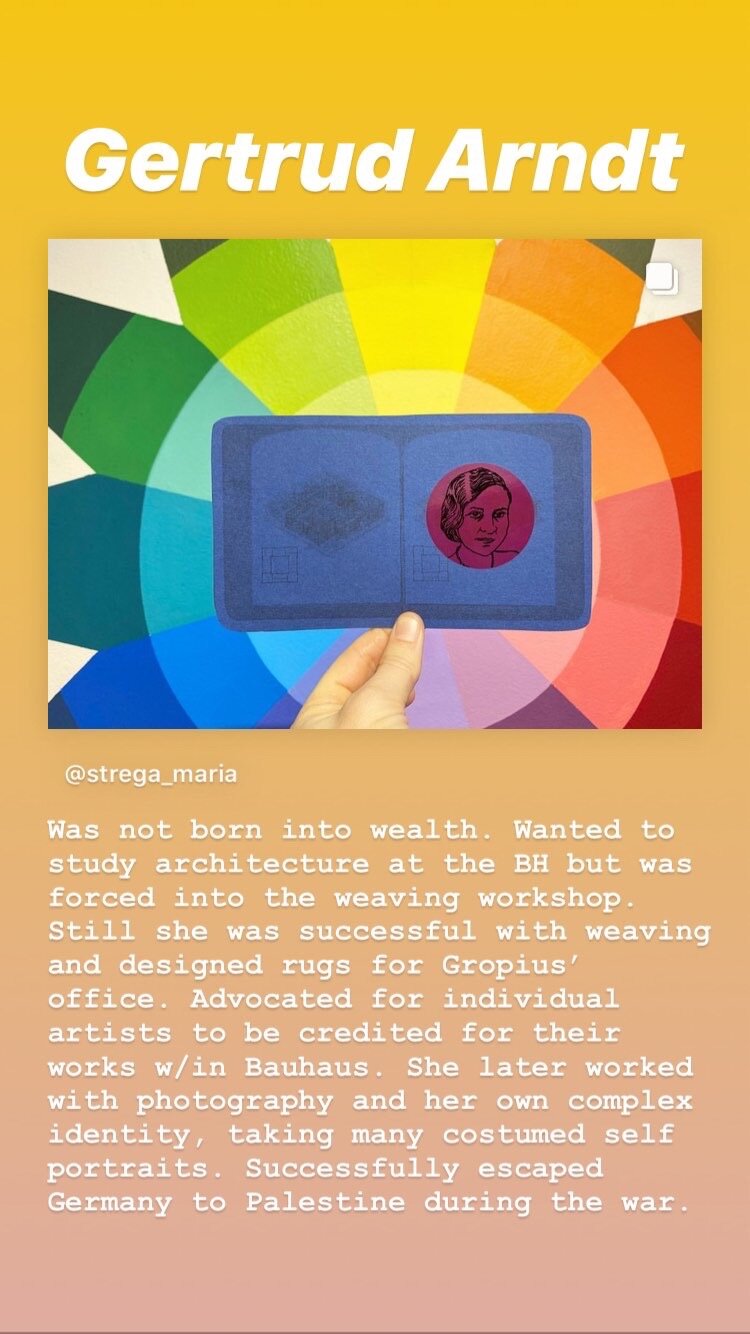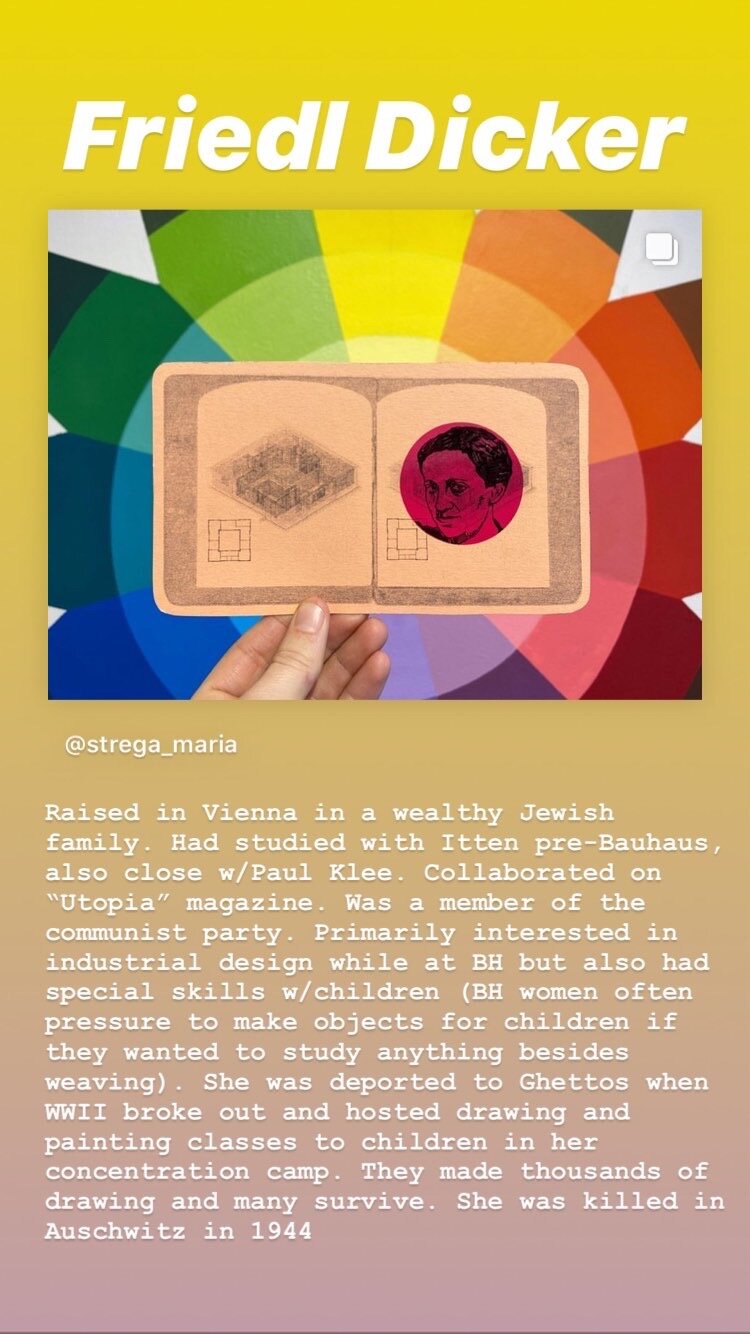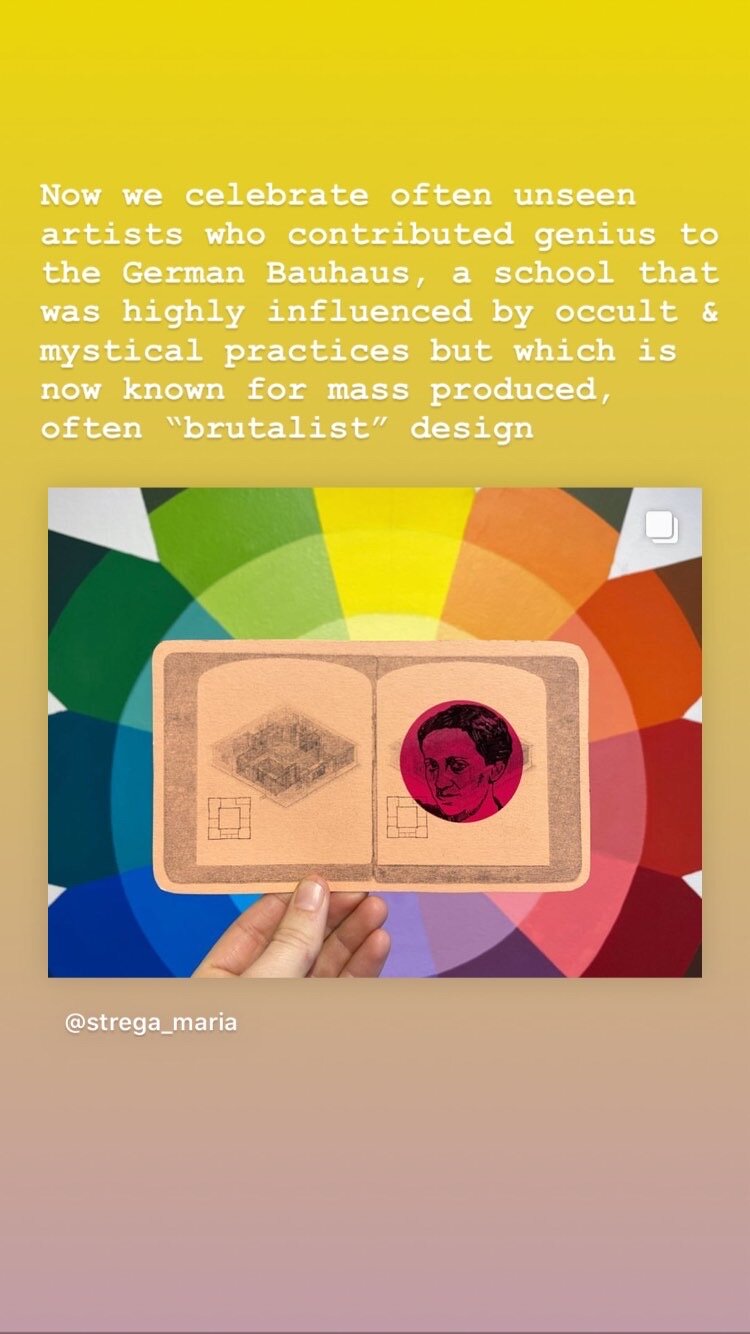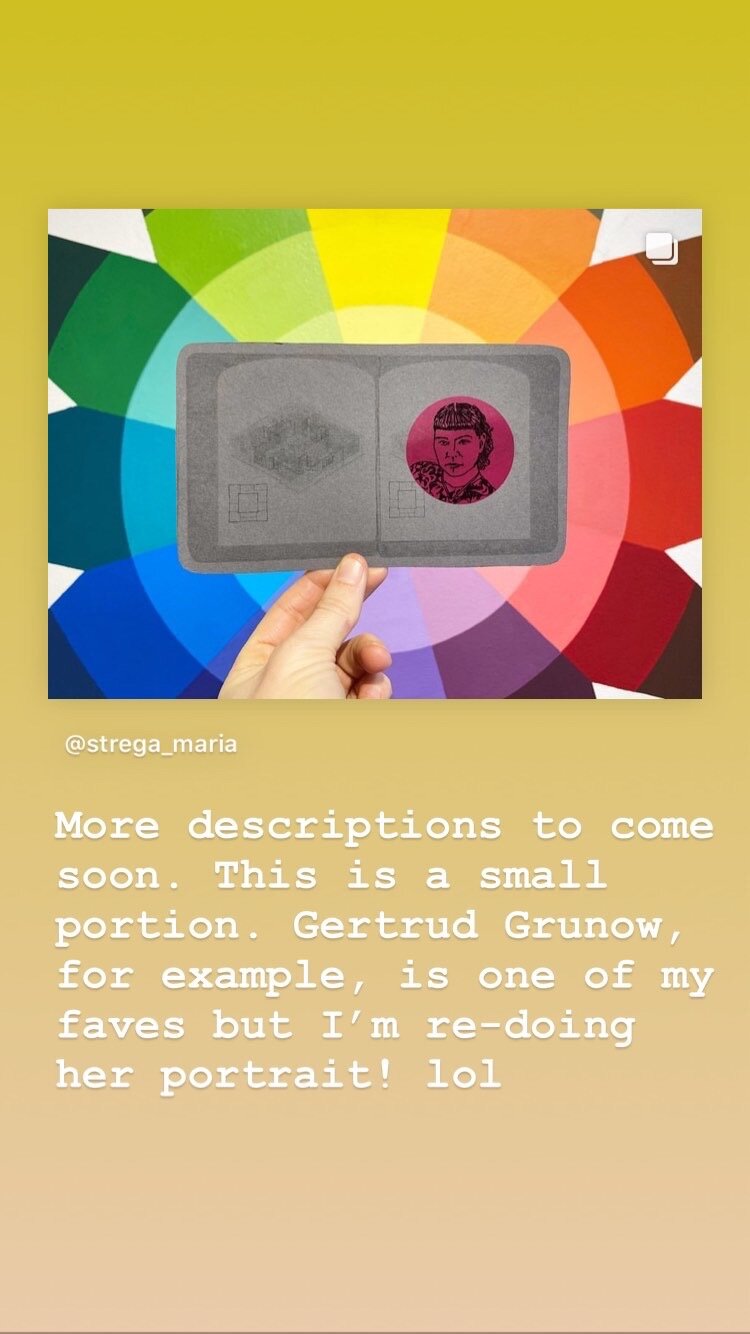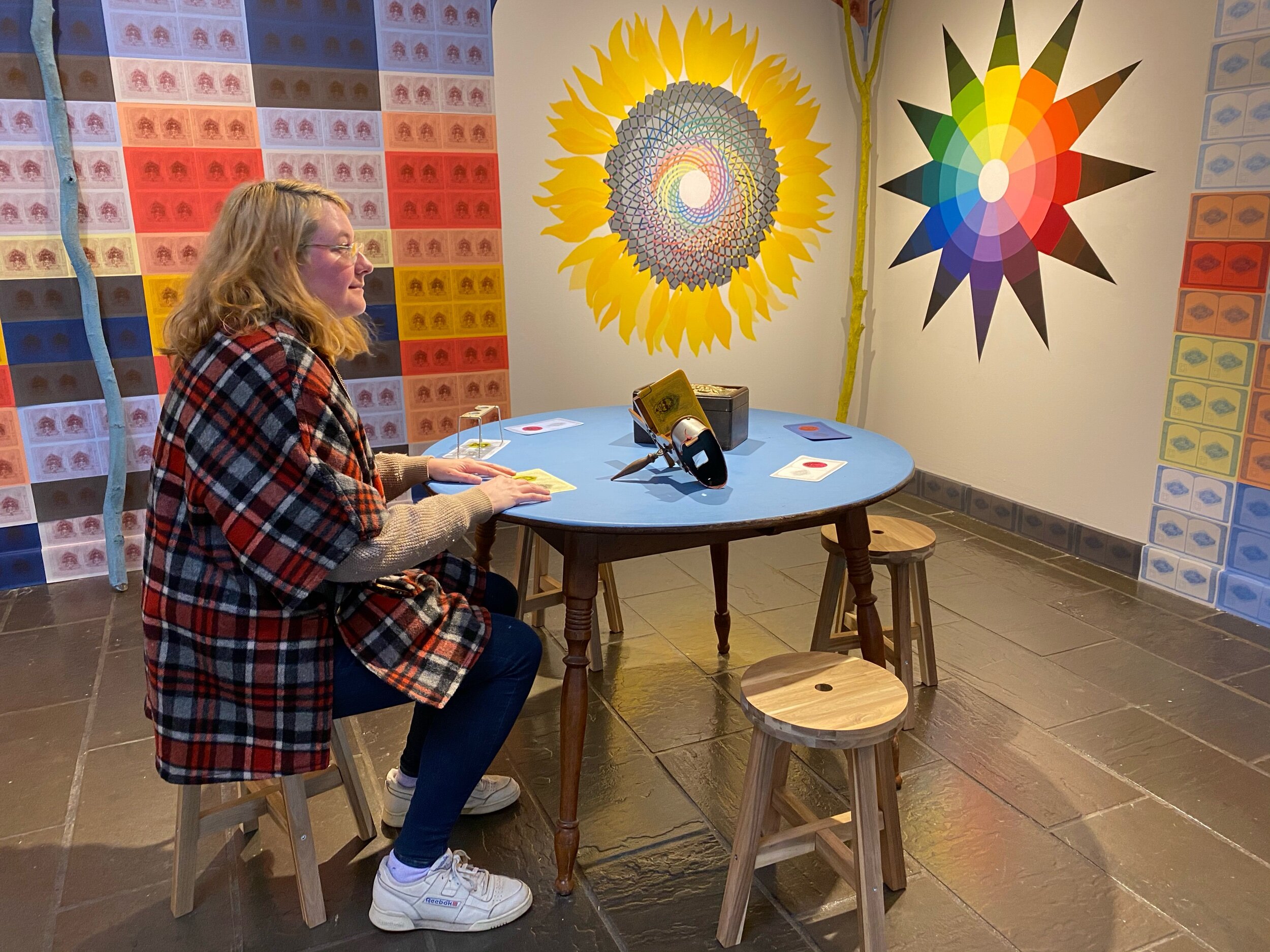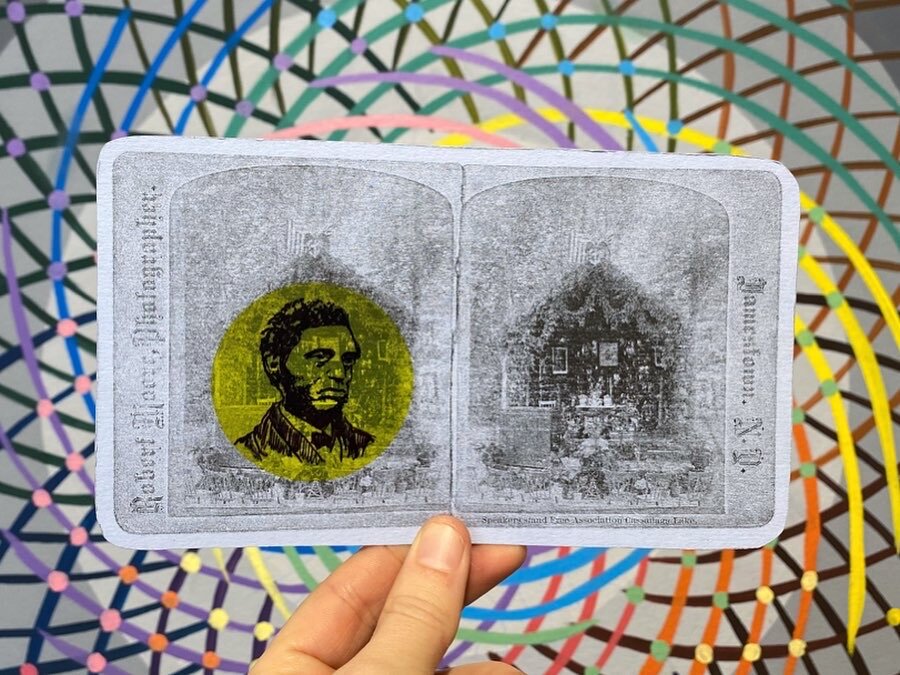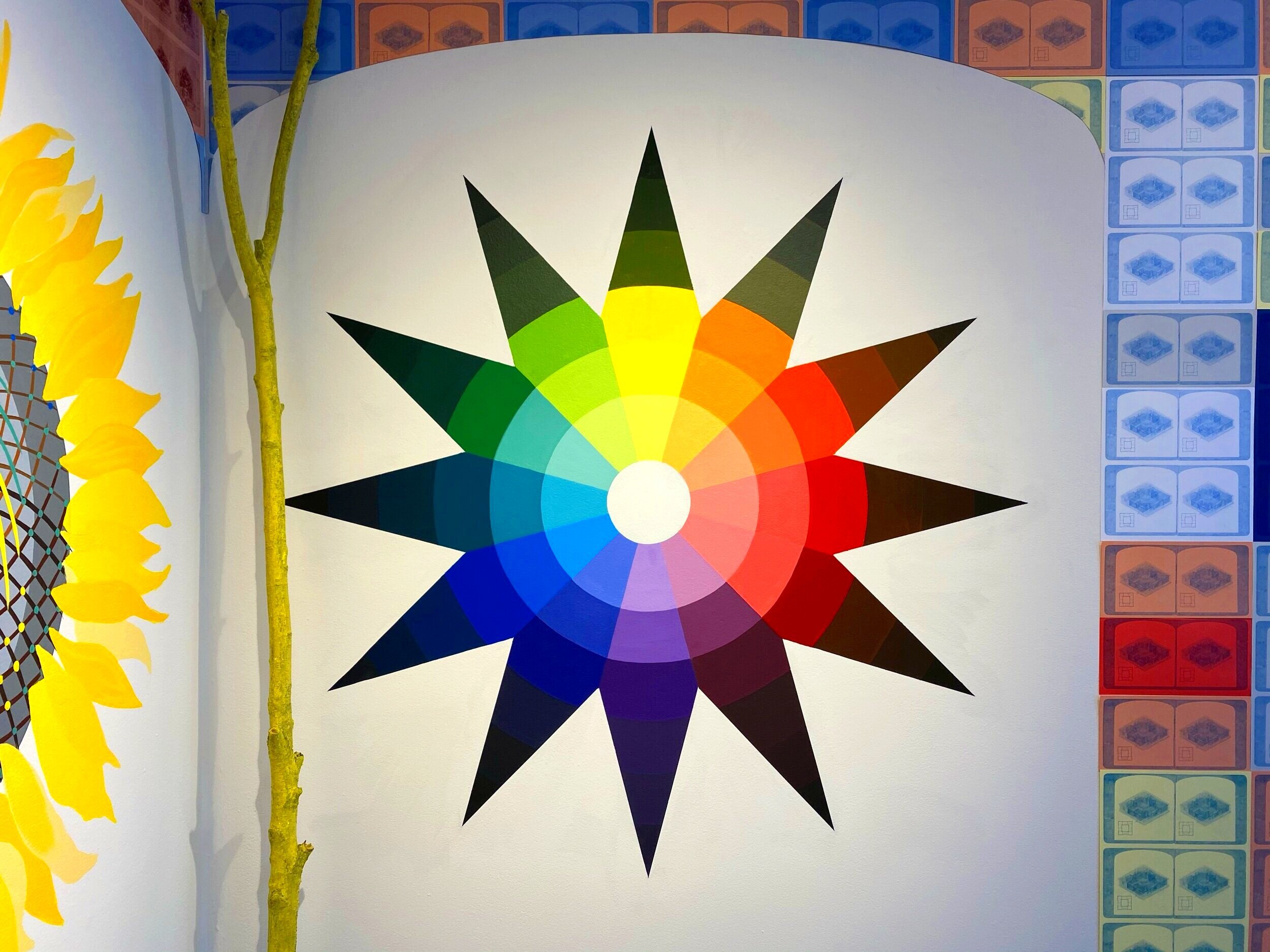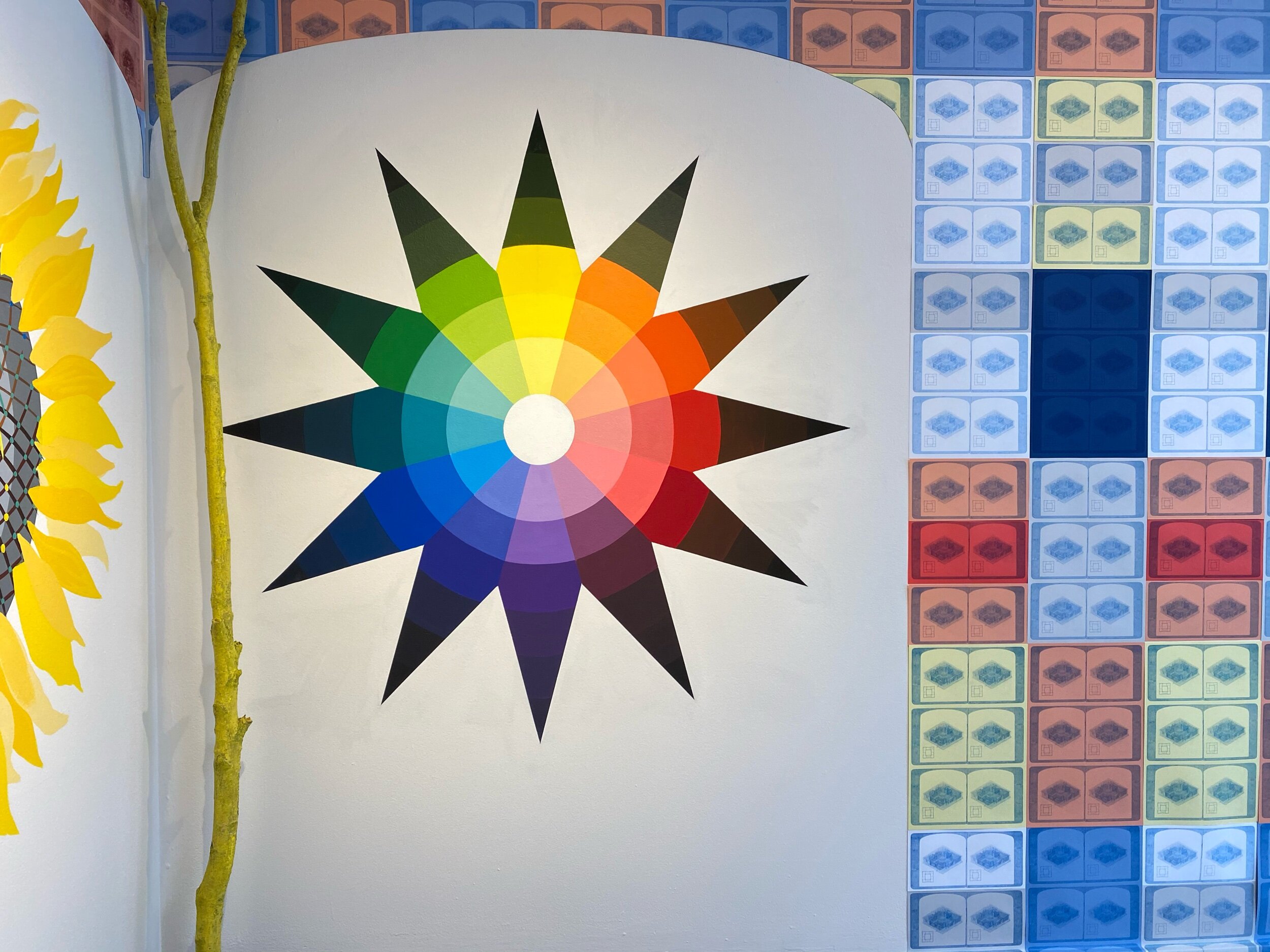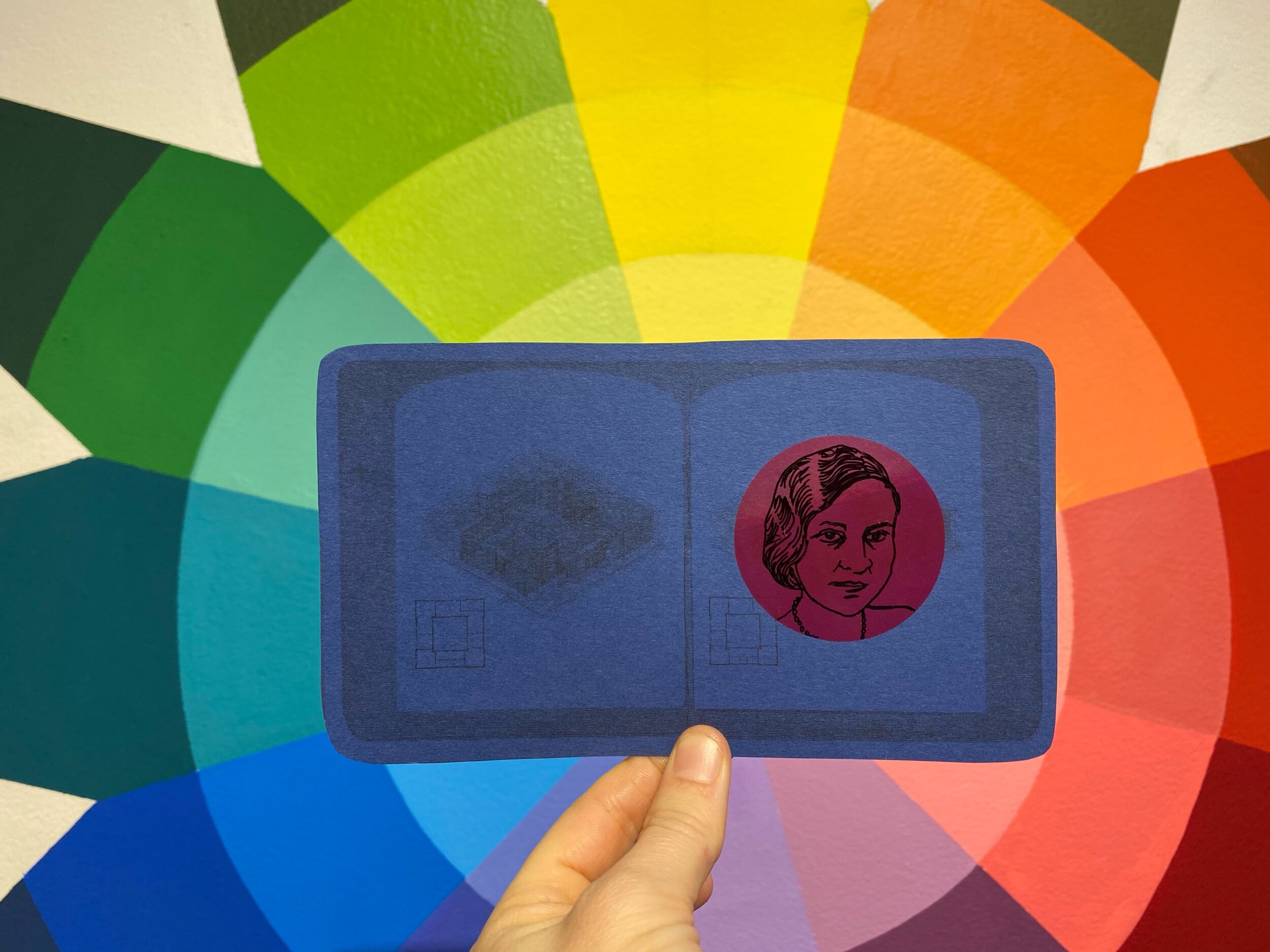MARIA MOLTENI
Bough House / Bauhaus // AFTER SPIRITUALISM, FITCHBURG ART MUSEUM
Bough House / Bauhaus, 2020
After Spiritualism: Loss and Transcendence in Contemporary Art, curated by Lisa Crossman // Fitchburg Art Museum, MA
Lily Dale is a Spiritualist town in New York that began as a camp meeting site in the late 19th century. The first clairvoyant message service was held in the Bough House—a structure of tree branches and flowers. Bauhaus was a German art school in operation from 1919 to 1933 that was known to promote the unity of architecture, craft, design, and fine art. New research reveals the significance early Bauhaus members gave to the occult and early Spiritualist artifacts like spirit photography.
This installation is inspired by a vintage stereograph (a 19th-century form of three-dimensional photography) of Lily Dale’s Bough House. Here, the stereograph draws parallels between histories (of Spiritualism and the Bauhaus) that are often viewed through separate lenses. Using the Stereograph as a metaphor as well as a participatory tool within the installation, Images from each movement are brought together to reveal a multidimensional view of the spirit world and its marginalized channelers.
Read below for a bit more contextual info from Molteni’s research (writing and zine in progress)
Bough House:
The Bough House or House of Boughs was the first structure built in Lily Dale, NY the most famous of American Spiritualist communities. (At the time, Lily Dale was called Cassadaga Lake Free Association, incorporated 1879). Built from tree boughs, hemlock branches covered by flowers and vines, the Bough House debuted on June 16 1880 for the dedication of the grounds ceremony, attended by thousands of visitors, in honor of “free speech”, “free thought” and “free investigation”. It served as a pulpit, or speakers stand, for spirit mediums to deliver messages and speeches to an audience while in trance. Mrs. Elizabeth Lowe Watson and Mrs. Amelia Colby were the first speakers to be featured in the Bough House, Mrs. Watson closing the event with a speech called “The Water Lily”. Many more addresses were given out of the House of Boughs in following years, including presentations by notable women’s rights activists such as Susan B Anthony, Anna Shaw and Isabella Beecher Hooker. Eventually more permanent structures and residences were built and the Bough House was no longer used. Two rarely seen or shared Stereographic images exist today in Lily Dale’s historic archive, managed by Ron Nagy who generously shared the image with me. (This image is repeated and installed like a wallpaper on the left side of the installation in a pattern that mimics a drawing for a weaving by German Bauhäusler Benita Koch-Otte.)
Spiritualism is largely misunderstood and misrepresented. Most do not know or recognize that influential inventors, writers, doctors & activists including abolitionists and women’s rights activists found faith and public platform in Spiritualist circles and public programs. During a time when women were denied the ability to speak publicly at abolitionist rallies or conferences, they were given space to do so at Spiritualist gatherings which doubled as spaces for activism. I’ve done a lot of research on Spiritualism past and present attending programs and conferences at Lily Dale and being practicing Spiritualist and current member of Lake Pleasant (Western MA), the other oldest Spiritualist community in the United States. Much of my research for this project and installation also came from the book Radical Spirits by Ann Braude. I drew portraits of many of the figures she covers in the book, from the earliest days of Spiritualism, many of which have been forgotten for their activism and influence once Spiritualism became more institutionalized. Many of these figured opposed the new direction of organized Spiritualism by which men nominated themselves to run for office and forbade trance speaking mediums to run. These drawn portraits are superimposed over the old Stereographs (reprinted onto many colors by a risograph) strewn about the seance table. When you look through the stereoscope, they hover in the layered 3D image like an auric ghost. I hope to call BACK to the Seance table those spirits who weighed in heavily but who have been largely unrecognized by history. I’ve begun to call them “Bough House Spiritualists” to frame a more organic, inspired and politically radical period of early Spiritualism when messages from the dead and advocacy for the living inspired a wave of slavery abolitionists, women’s rights activists and trance speakers who hoped to dismantle and liberate more restrictive, conservative, hypocritical religious and social organization/thought.
Some of those spirits include: Achsa Sprague, Sojourner Truth, Mary Fenn Love Davis, Dr Juliet Stillman Severance, Lizzie Dotten, Lois Waisbrooker, Jarena Lee, Amy Post, William Cooper Nell
Bauhaus:
The German Bauhaus perhaps needs less explanation. There have been countless books, films, exhibitions covering the 3 phases and locations of this pre WWII visionary school shut down by the Nazis. One could argue that the Bauhaus, seen for its hard edged, mass produced Brutalism, is also often misrepresented and misunderstood. For years I’ve been obsessed with the Bauhaus and sites like Black Mountain College or the Aspen Institute that grew out of its ashes on American soil. Being a queer mystic myself, I’ve always found popular and even academic retellings of the Bauhaus to be a bit off. My interest in the school/movement is heavily rooted in the visionary, its spiritual, mystical and haunted aura and figures like Johannes Itten and Gertrud Grunow. For this reason, I was ecstatic when Elizabeth Otto published Haunted Bauhaus and pre-ordered my copy ; ). In her book she covers utopian, spiritualist, feminist queer and Communist/Leftist influences on the school, starting at the beginning, when even Walter Gropius had his head in the cloud of occult utopias. She also recognizes the many genius, particularly women and queer folks, who greatly influenced and shaped the school but have been repeatedly drowned out by a handful of famous Bauhaus men.
For this half of my installation, I fabricated a stereographic image by duplicating (and spacing appropriately) Benita Koch-Otte’s isometric rendering of the Haus Am Horn. The Haus Am Horn was the first building constructed by the Bauhaus and designed to be the most basic, replicated building in the utopian commune that Gropius planned to construct for their community. The stereographic version of Koch-Otte’s drawing was also risoprinted and installed on the right side of this installation. However, this arrangement mirrors a woven composition by Bauhäusler Otti Berger, one of my favorite overlooked Bauhäusler. Mirroring the Bough House section, drawn portraits of notable Bauhäusler, who I feel possessed a similar spirit to their early overlooked American Spiritualist counterparts, overlay the stereographic Haus Am Horn so that when you peer through the Stereoscope, they hover in their auric circle, like a ghost in the building. I Photographed many of them against Johannes Itten’s color star, which I hand painted onto the wall. This is an incomplete list of those I represented in the show. I am continuing to draw their portraits: Gertrud Grunow, Friedl Dicker, Otti Berger, Benita Koch-Otte, Margaret Camilla Lieteritz, Max Peiffer Watenphul, Gertrud Arndt, Gunta Stoltzl, Ida Kerkovius, Florence Henri, Lucia Moholy
My installation uses the form of the Stereograph to address his/her/theirstories that we often view through separate lenses though they overlap to form a more enhanced, multi dimensional vision.
Special Thanks to Lily Dale historian Ron Nagy for aiding in research on the Bough House + Jessica Caponigro/Snake Hair Press for aid with riso printed wallpaper. Also a huge thanks to Elizabeth Otto and Ann Braude for their respective texts Haunted Bauhaus / Bauhaus Women and Radical Spirits. These texts, among a few others and years of studying both topics, greatly informed my work!

